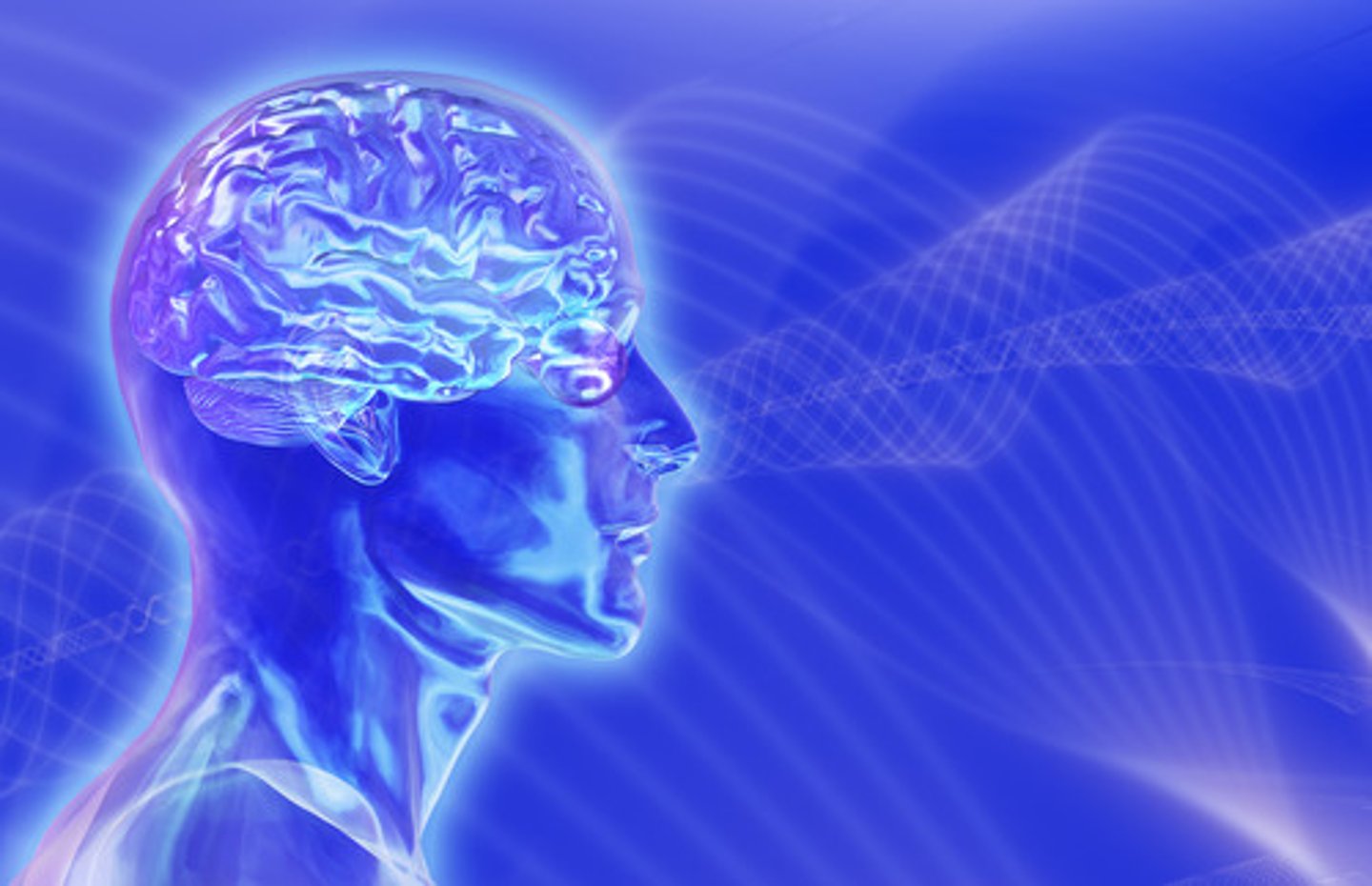C2.2- Neural Signalling
1/53
There's no tags or description
Looks like no tags are added yet.
Name | Mastery | Learn | Test | Matching | Spaced |
|---|
No study sessions yet.
54 Terms
What is the function of dendrites?
the dendrites help to make connections with other neurons
--> the branches increase the surface area for receiving signals
dendrites receive signals from the other neurons
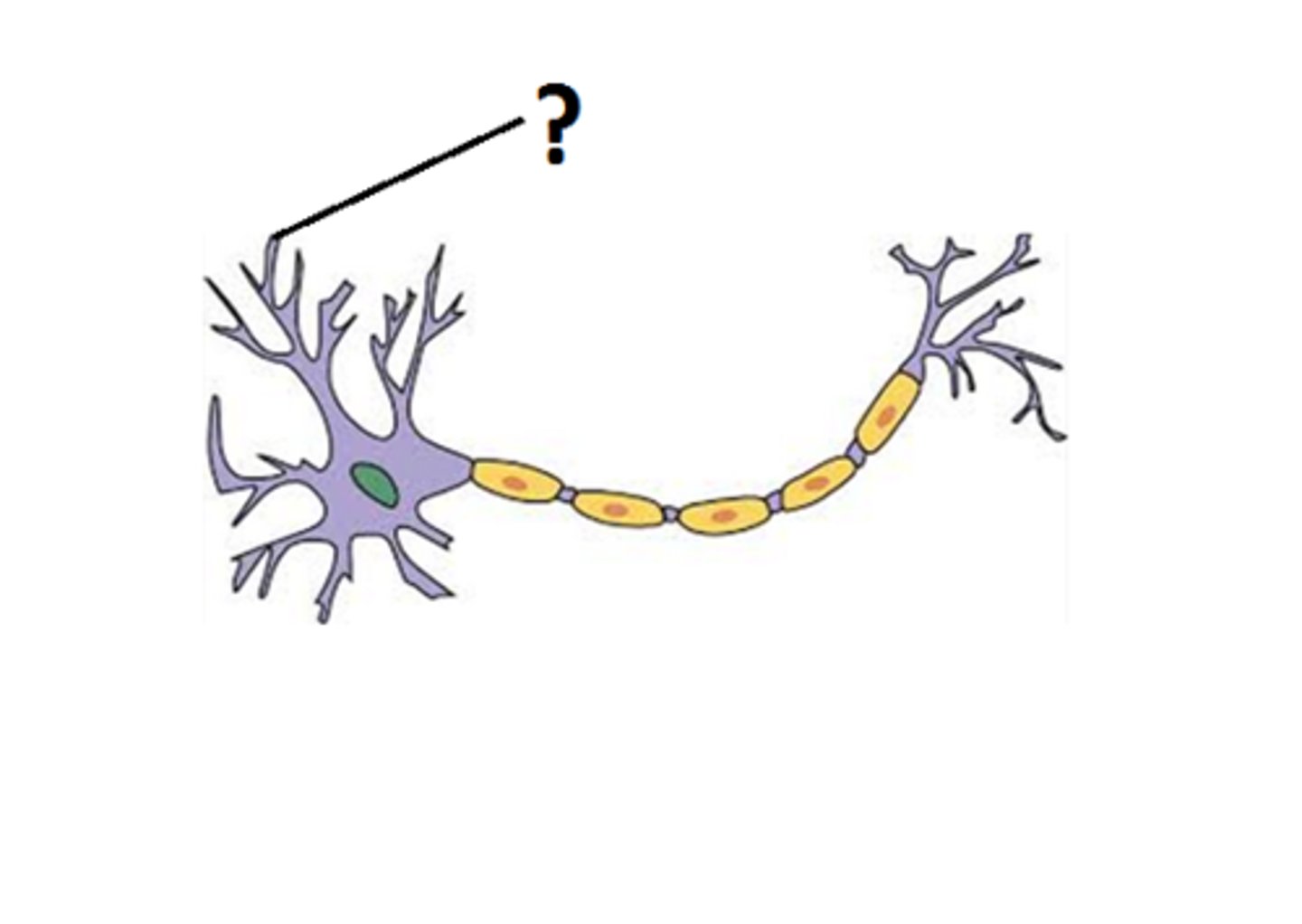
What is the function of an axon?
the axon is a long single fibre
--> in myelinated neurons, the entire axon is covered by Schwann cells
--> in the peripheral nervous system, Schwann cells secrete myelin which is made up of 75% lipids and 25% proteins
--> myelin wraps around the axon and acts as an insulating cover called the myelin sheath
the axon transmits the electrical impulse
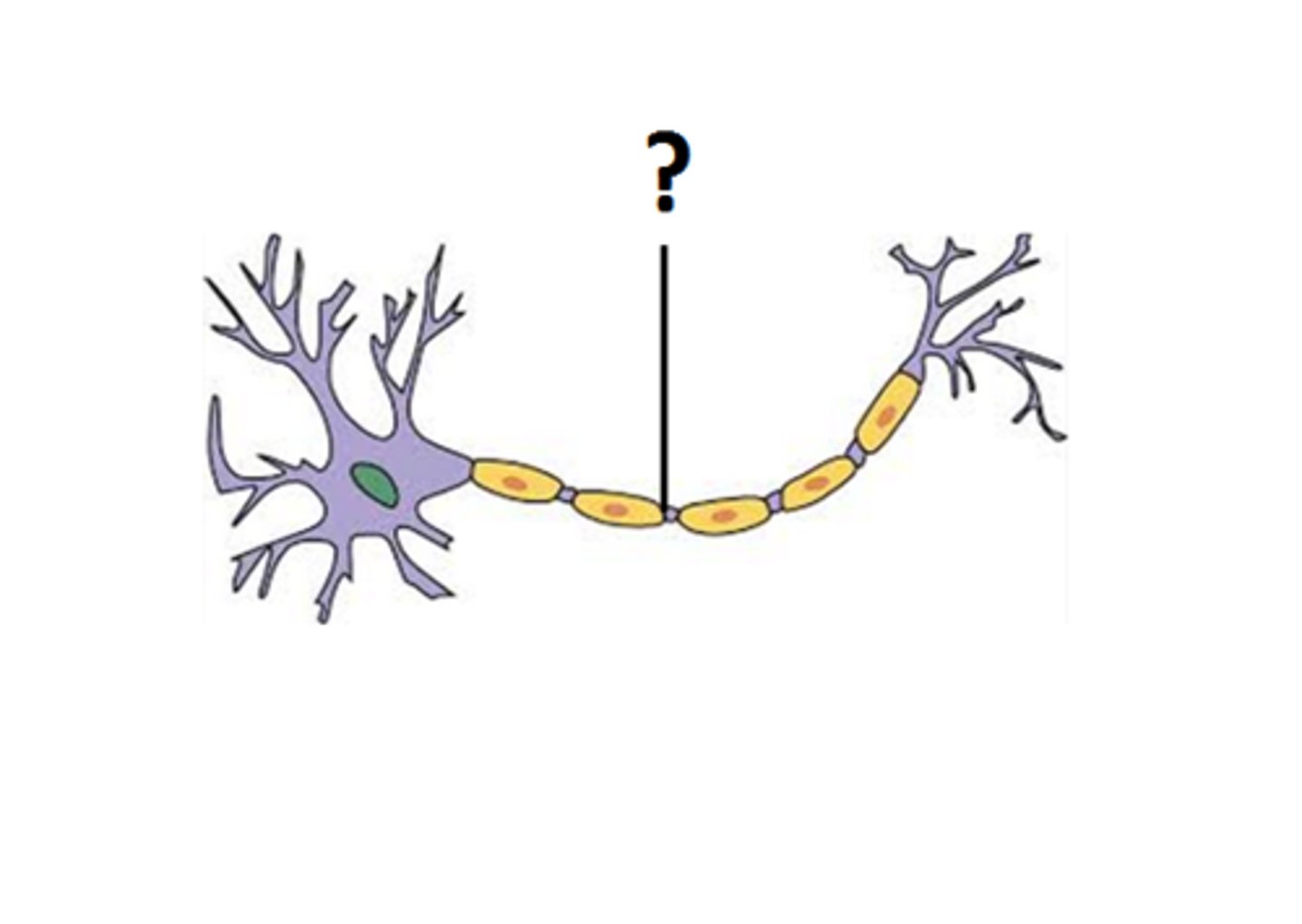
What is the function of the neuron cell body?
-has a nucleus and cytoplasm but no centrioles
--> this is because neurons don't multiply
-cell body contains genetic information, maintains the neuron's structure and provides energy to drive activities
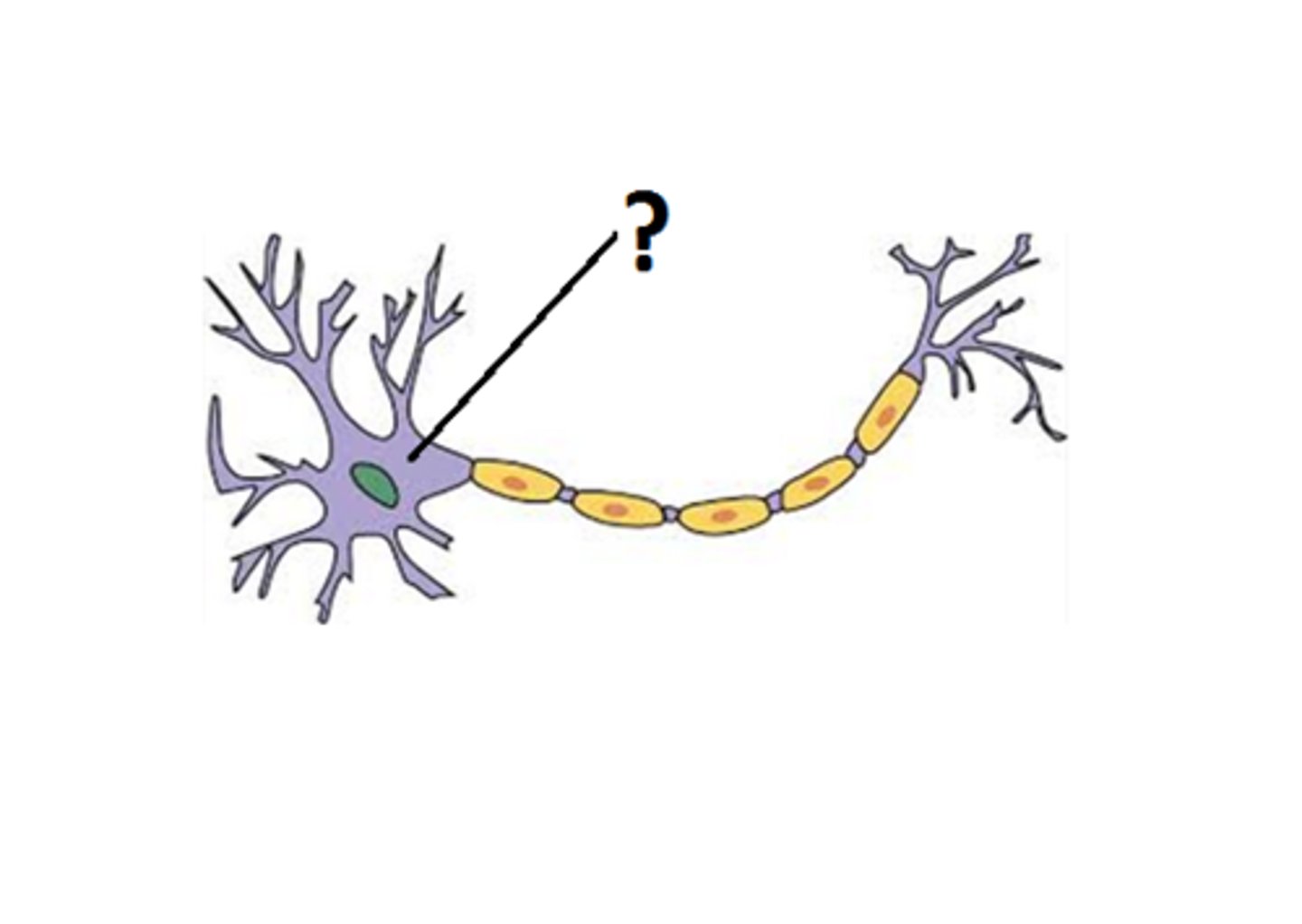
Identify the cell body, axon and dendrites in diagrams of typical sensory and motor neurons.
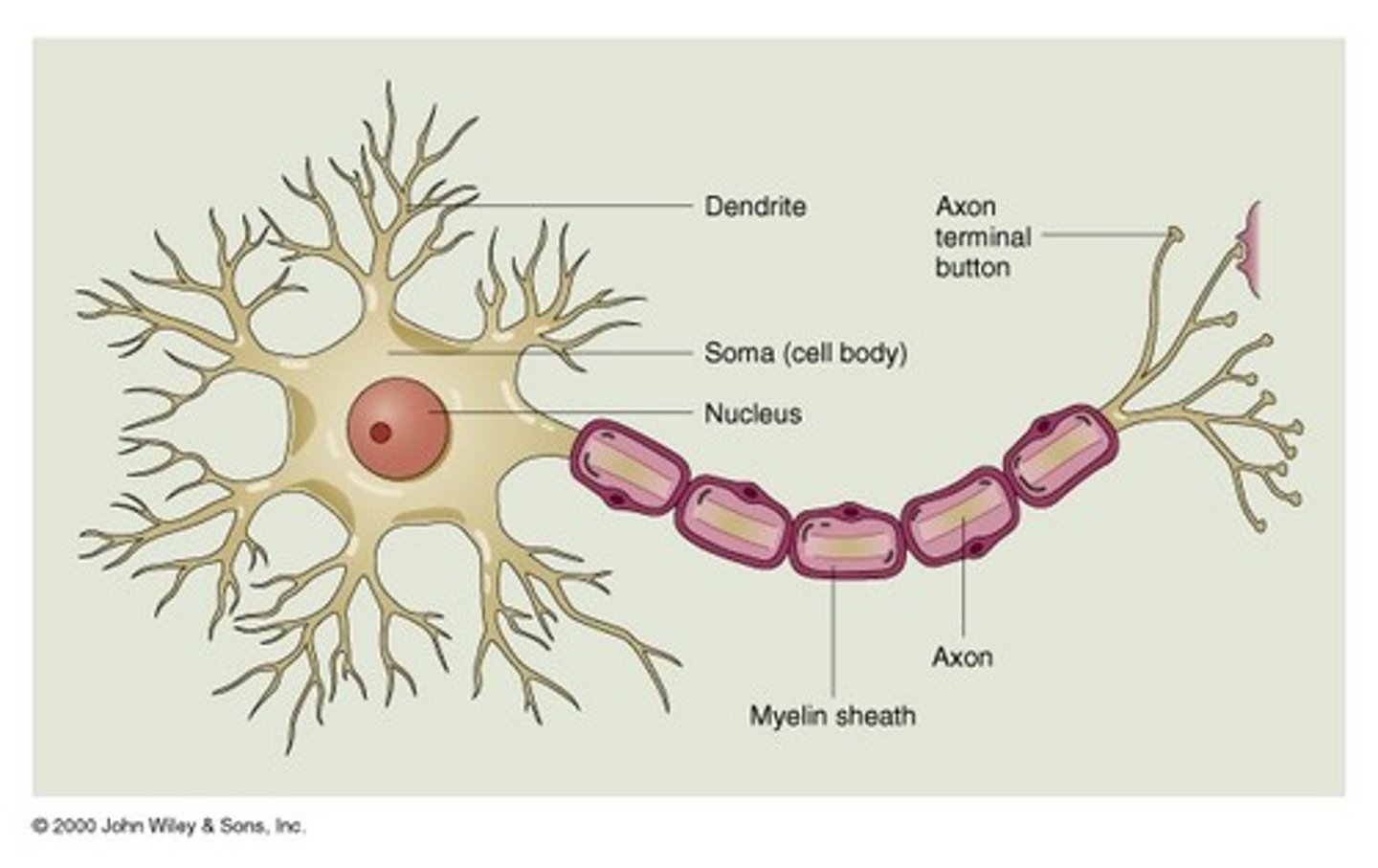
What is the axon hillock?
connects cell body with axon and is where action potential is first generated

What is the myelin sheath?
made up of lipids and proteins and this supports its adhesion to the axon
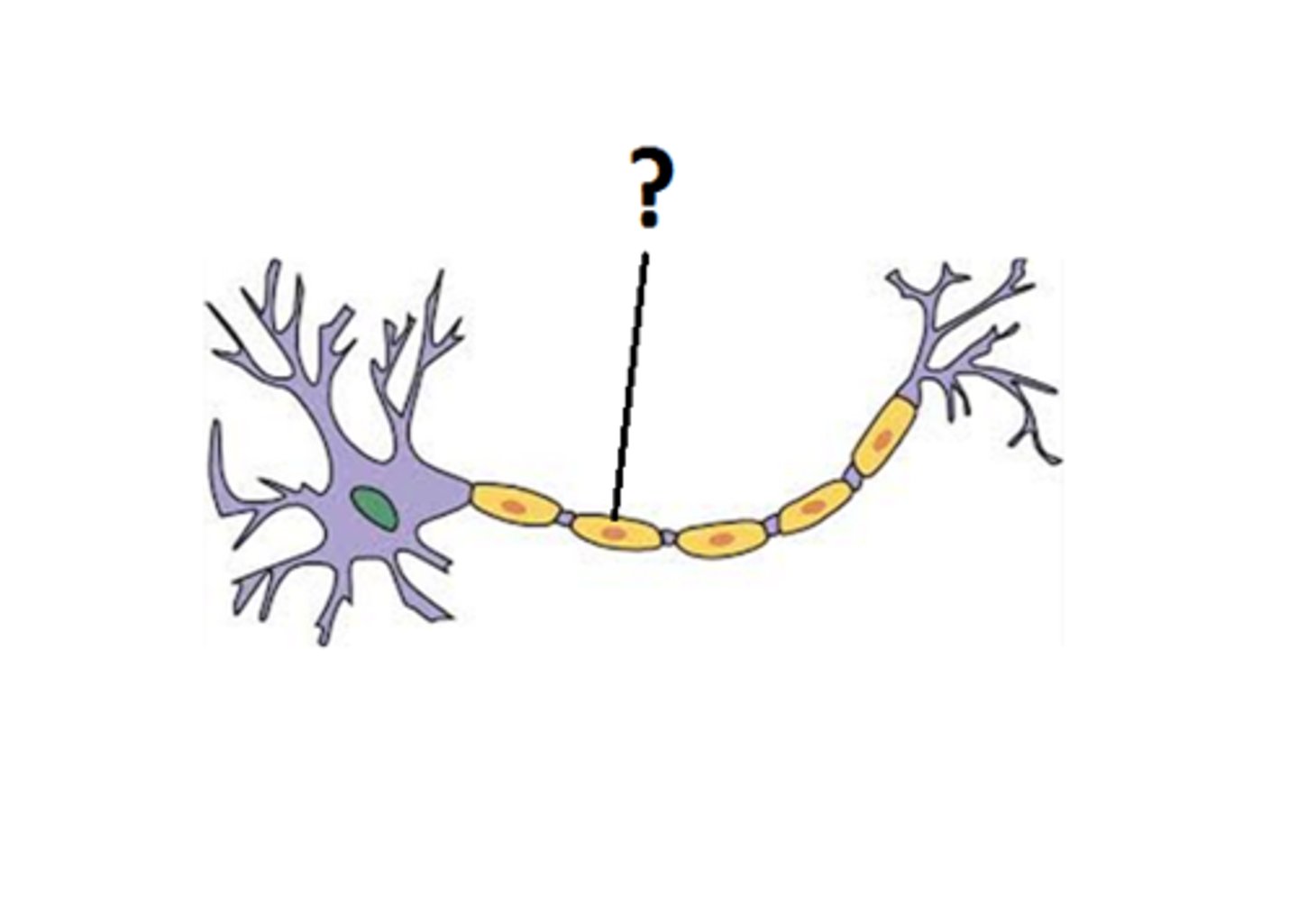
What are oligodendrocytes?
they secrete myelin in the central nervous system
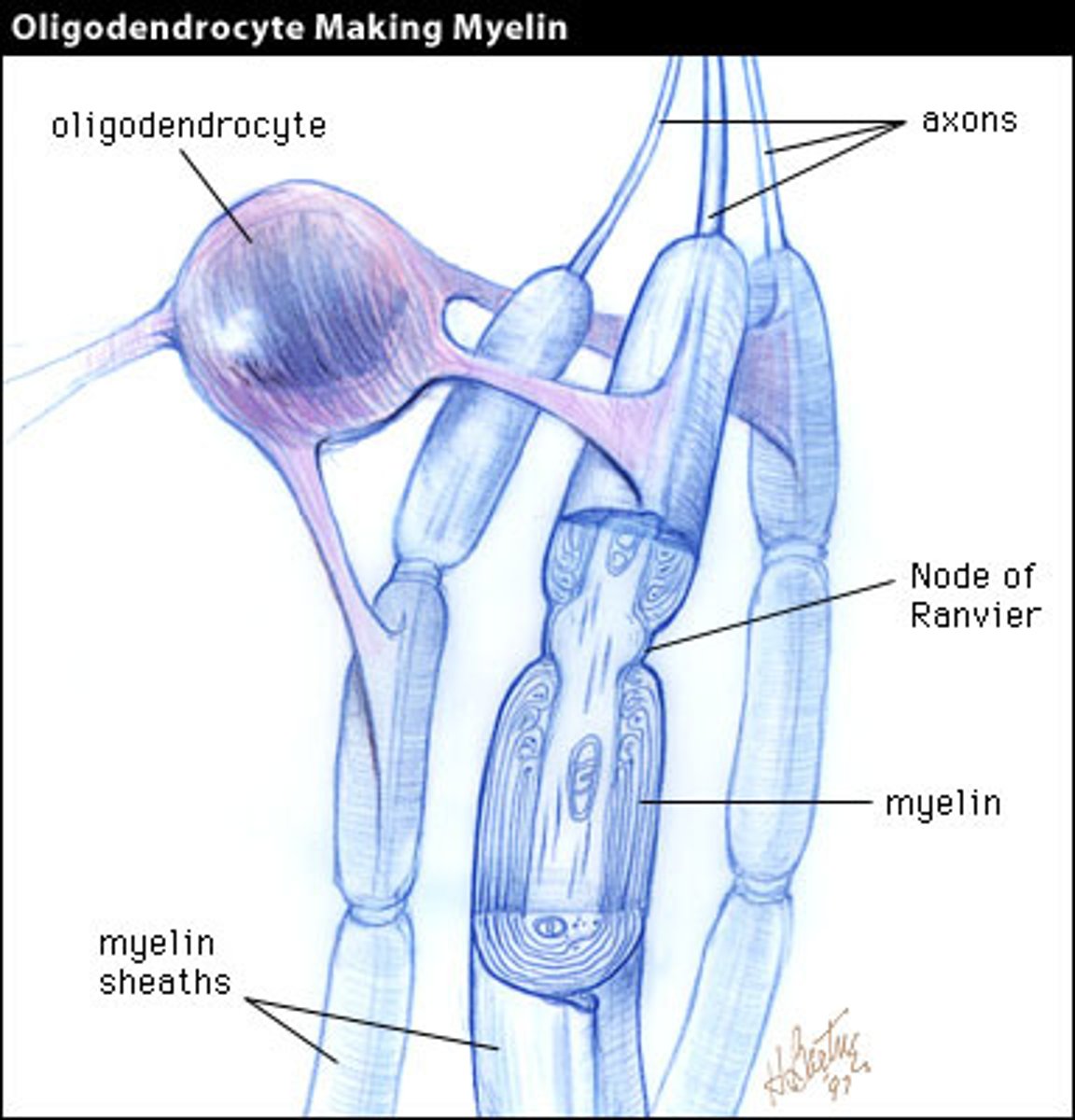
What are Nodes of Ranvier?
unmyelinated gaps between Schwann cells
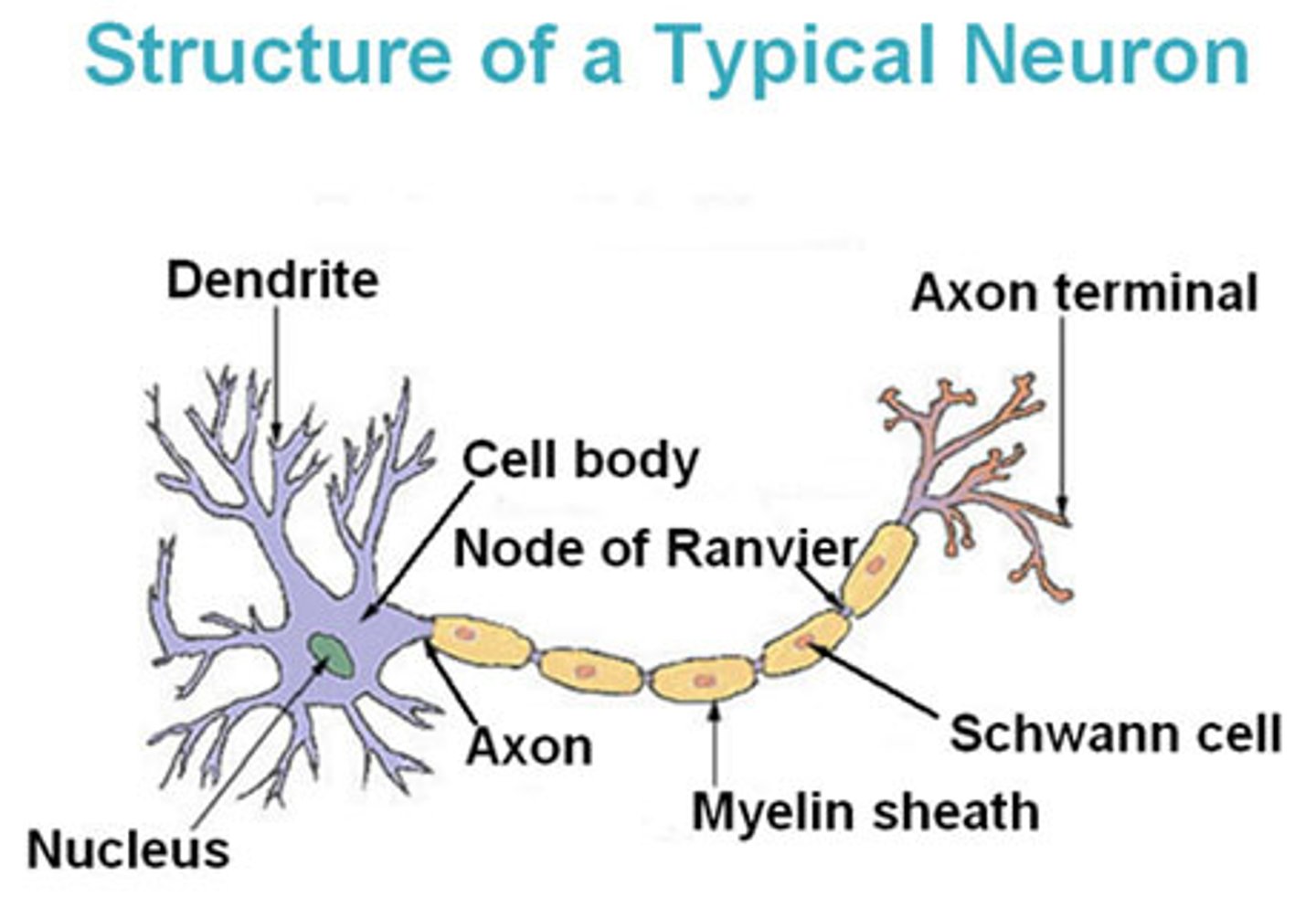
Define membrane potential.
the voltage difference across a membrane
How is this measured?
microelectrodes are placed on either side of the membrane and the amount of polarization can be measured as the voltage difference between the inside and outside cell membrane
the inside of cells is usually negative so the membrane potential is usually negative
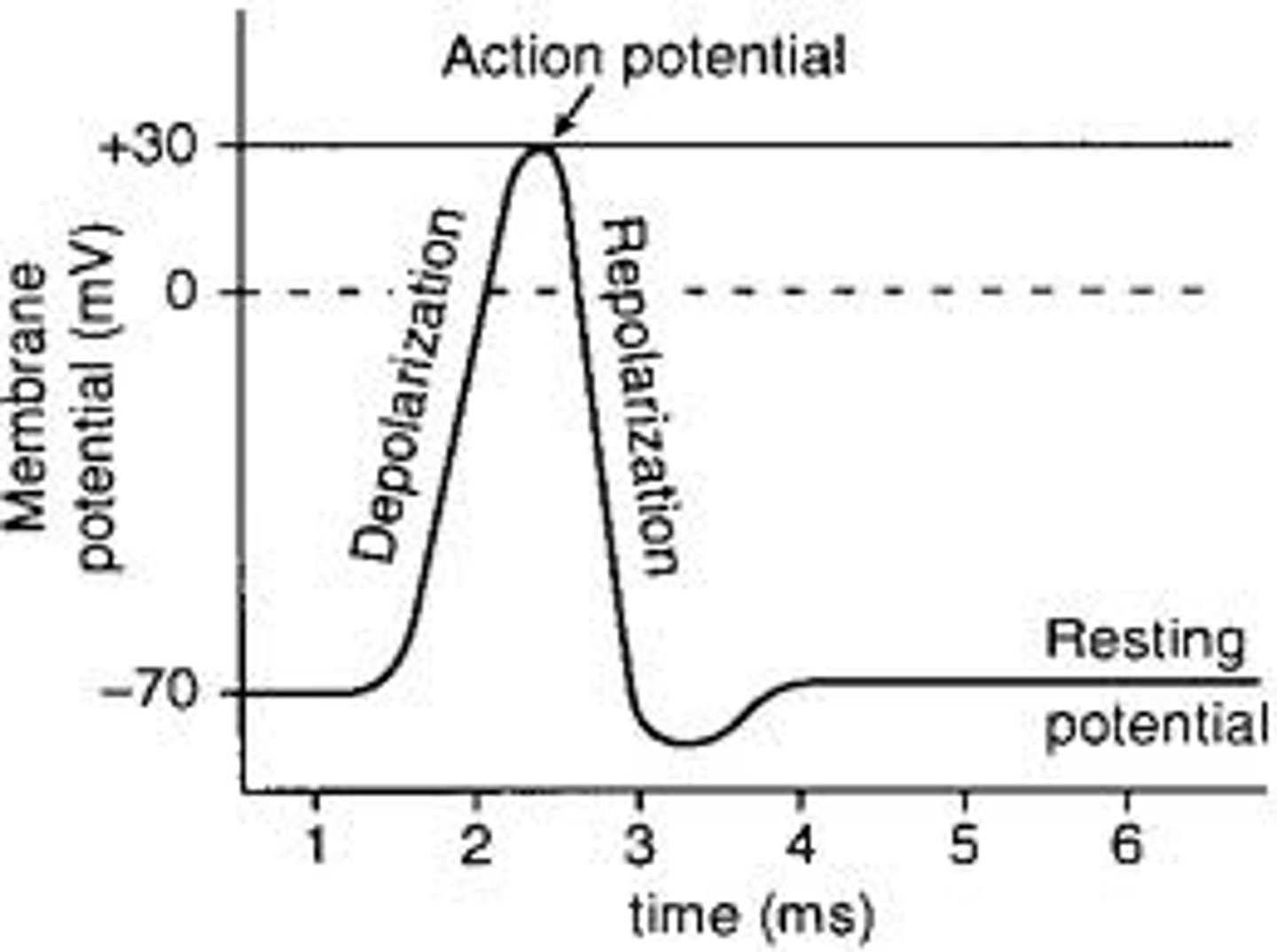
Define resting potential.
when not sending an impulse, the neuron is at rest.
--> resting membrane potential of a neuron is around 70mV
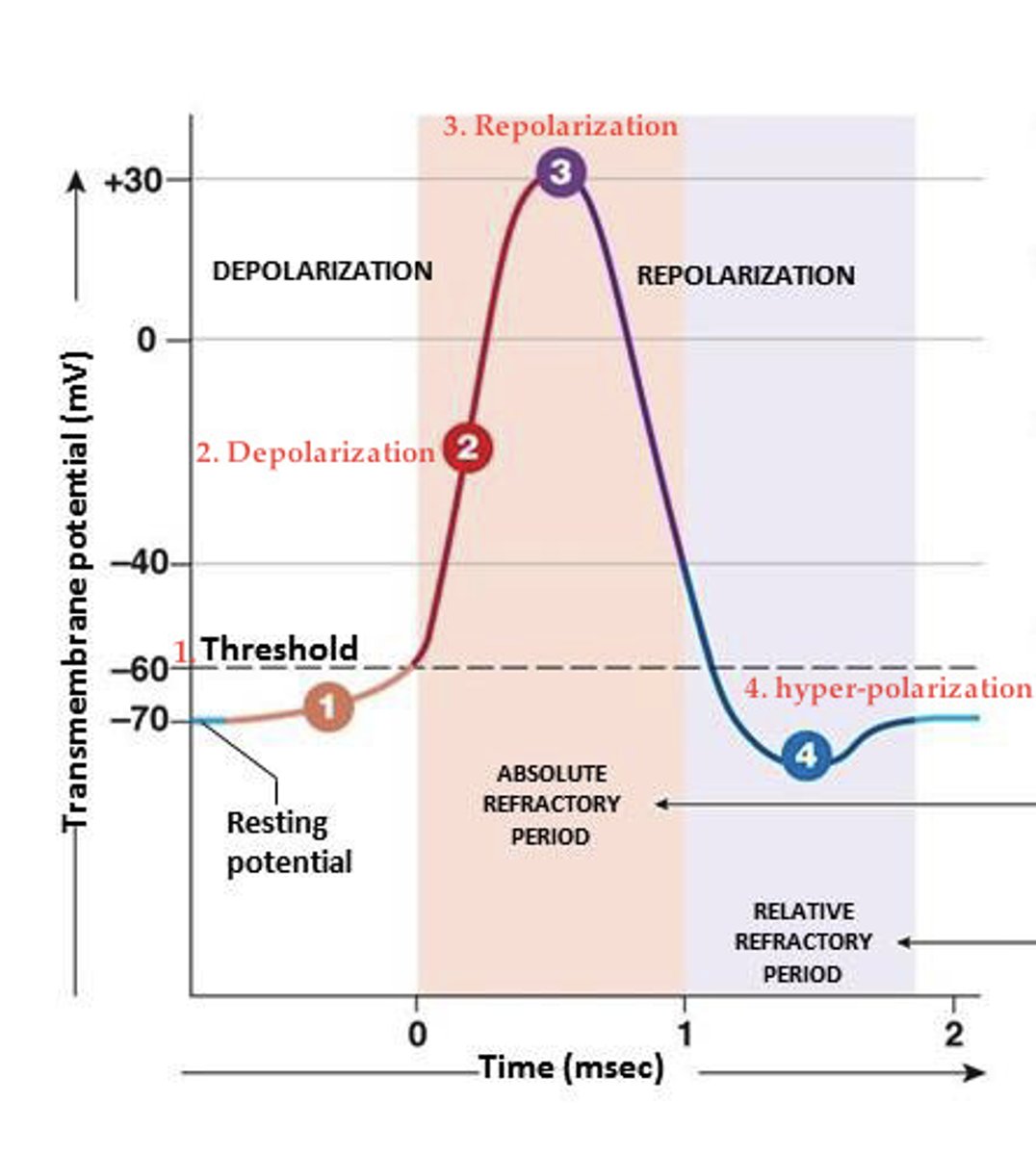
Outline three mechanisms that together result in the negative resting potential of a neuron
1. sodium potassium pump
--> actively transports 3Na+ ions out of the neuron and 2K+ ions into the neuron
--> pumps more ions into the cell than out, resulting in a negative membrane potential
2. K+ ions can leak out through the cell membrane
3. negatively charged proteins in the neuron contribute to charge imbalance
State the voltage of the resting potential
-70mV
Outline the six steps of sodium-potassium pump action
1. resting potential
--> membrane potential is at -70mV
2. stimulus
--> stimulus binds to the Na+ gated ion channel causing Na+ influx
3. threshold
--> once the membrane potential increases to meet the threshold potential
4. depolarisation
5. repolarisation
6. refractory
Define nerve impulse.
a nerve impulse is an action potential which is propagated along neurons due to Na+ movement that depolarizes one part of the membrane triggering depolarisation in neighbouring parts of the neuron
an electrical impulse is the result of a wave of action potentials starting at the dendrites and ending at the synaptic terminal
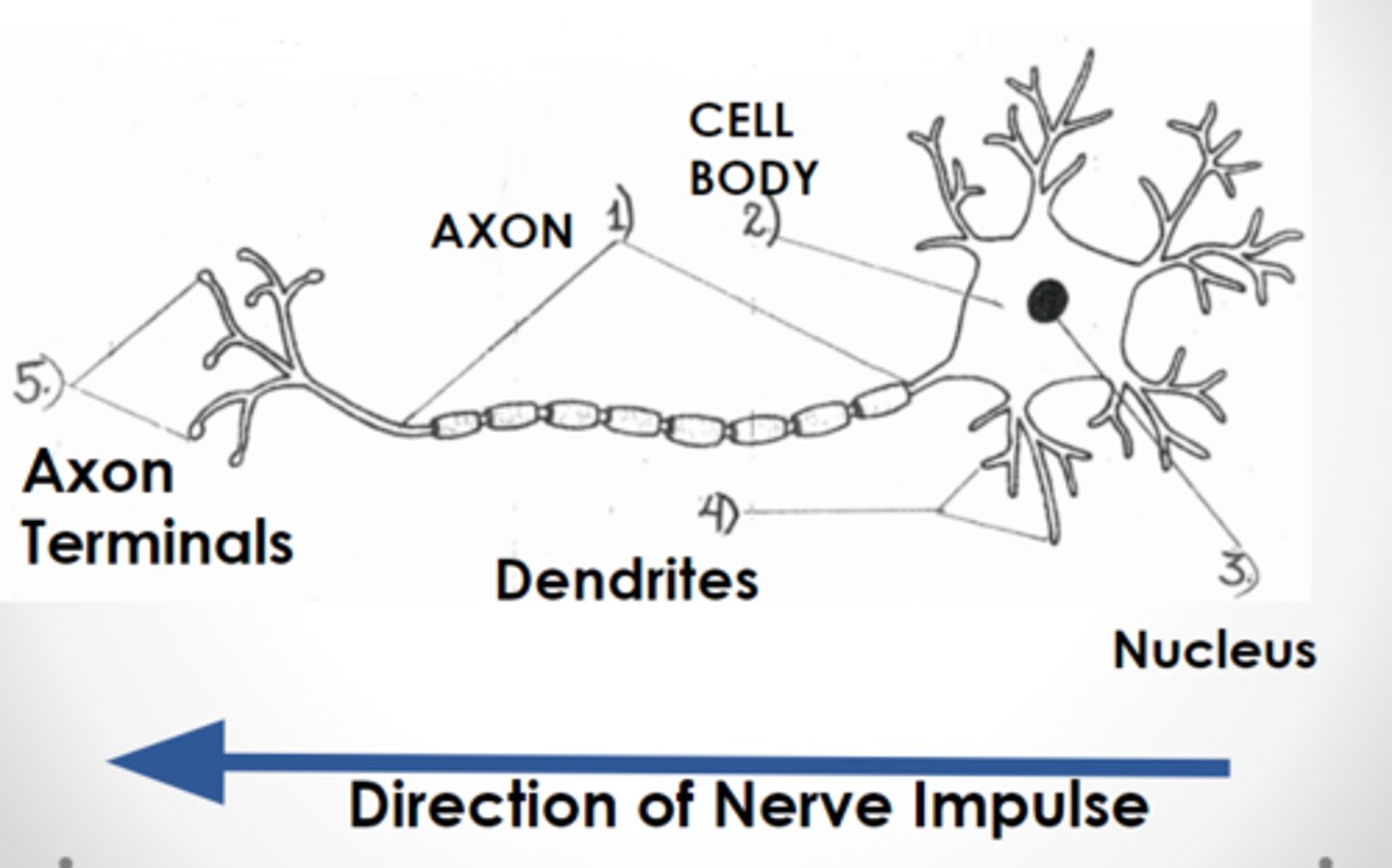
Define action potential.
action potential is basic unit of neuron function
it is the electrical signal that a neuron generates to transmit information along the cell membrane from the dendrites to the synaptic terminal
action potential is a sequence of changes due to movement of Na+ and K+ across the membrane
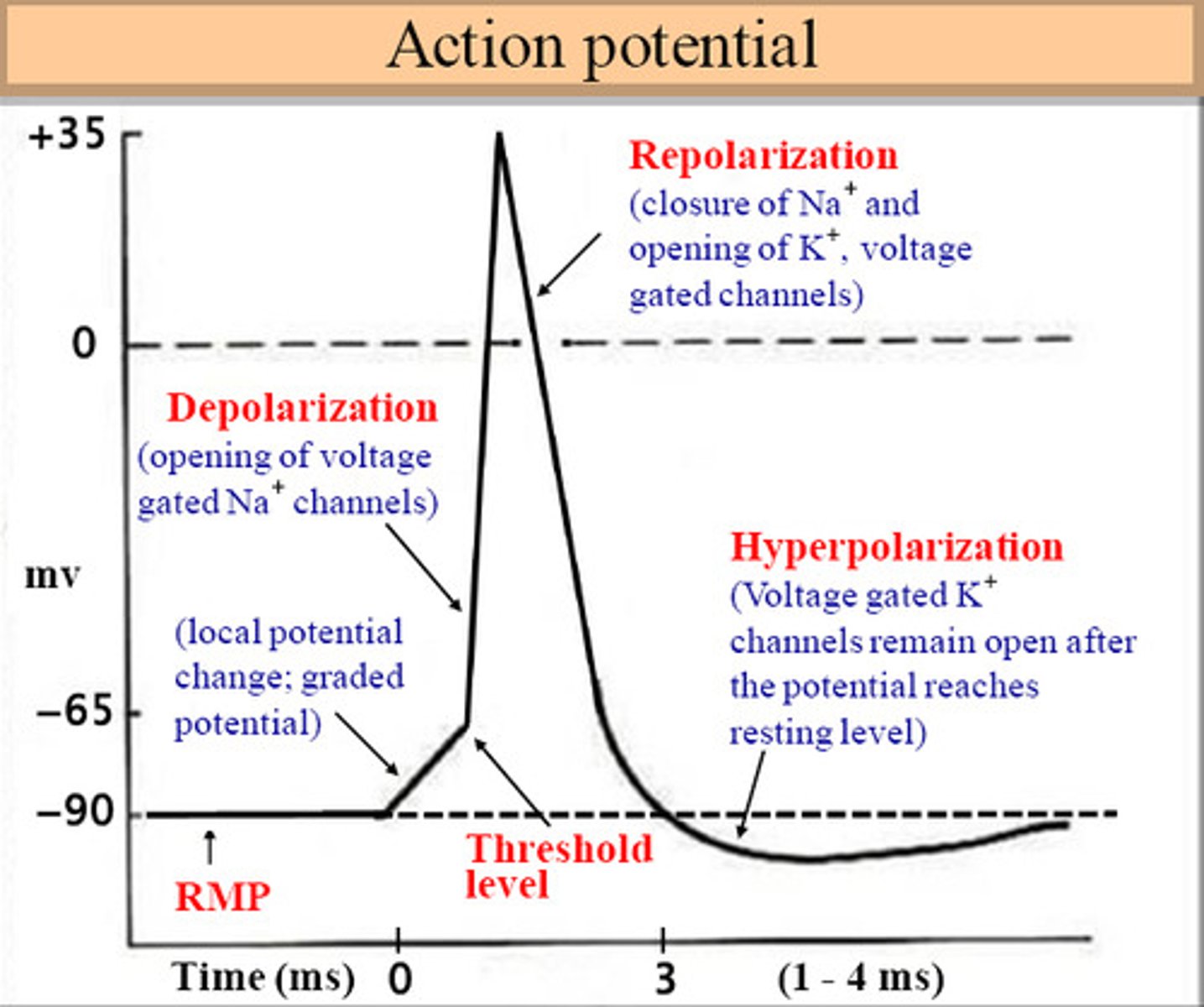
Outline the correlation between conduction speed of nerve impulses and axon diameter
the larger the axon diameter, the quicker the conduction of an action potential due to quicker signal transmission
--> because a larger axon experiences less resistance to ion flow (wider space means less opportunity for collision with obstacles)
in giant squid, axons can be up to 500 micrometers and conduct impulses at 25m per second
--> this allows for a very fast escape response as there is rapid signal transmission to muscles controlling jet propulsion
*this is a key evolutionary adaptation in giant squid
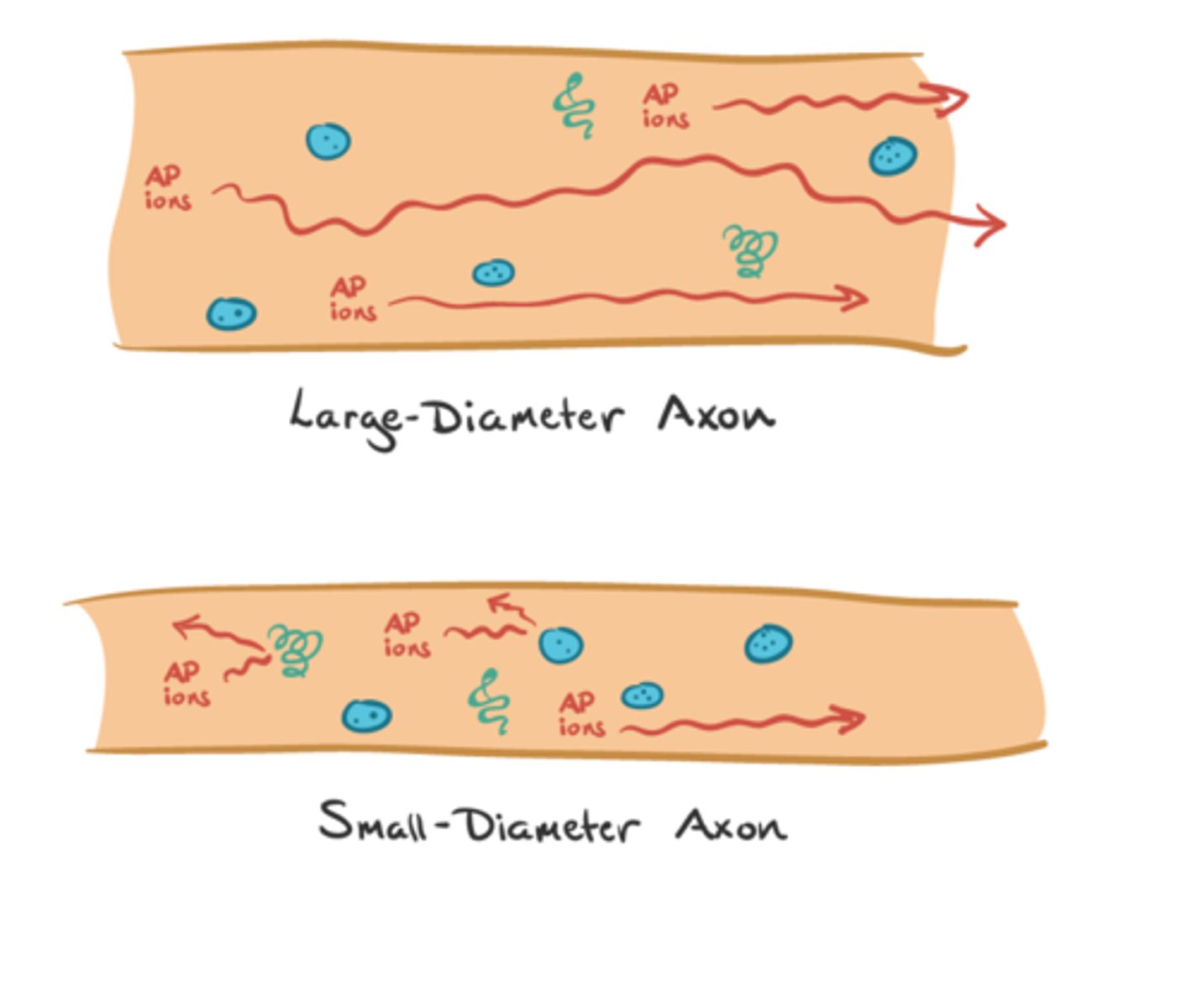
Explain the difference in nerve impulse speed for myelinated and unmyelinated fibers
myelination increases the speed of neuron impulses
--> Schwann cells grow around axon creating myelin layers
in myelinated neurons, impulse can jump from one Node of Ranvier to the next, increasing the speed of transmission to as quick as 100 meters per second
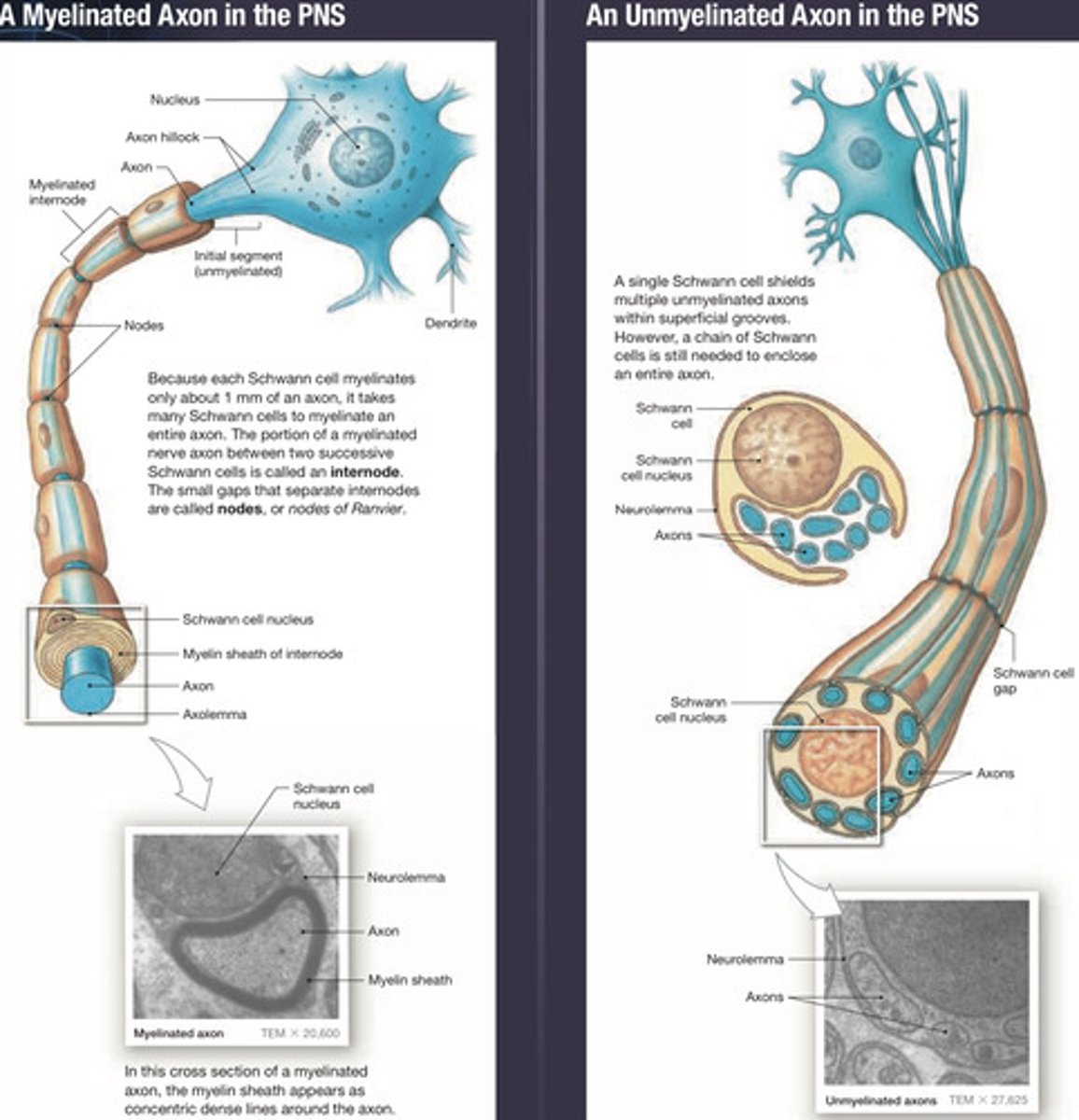
State the correlation between conduction speed of nerve impulses and animal size.
nerve conduction velocity remains relatively constant across all animals but:
larger animals experience longer delays as neurons need to travel further distances due to larger bodies
--> this results in slower reflexes in larger animals
Define synapse
a synapse is a junction where neurons connect to another cell/neuron
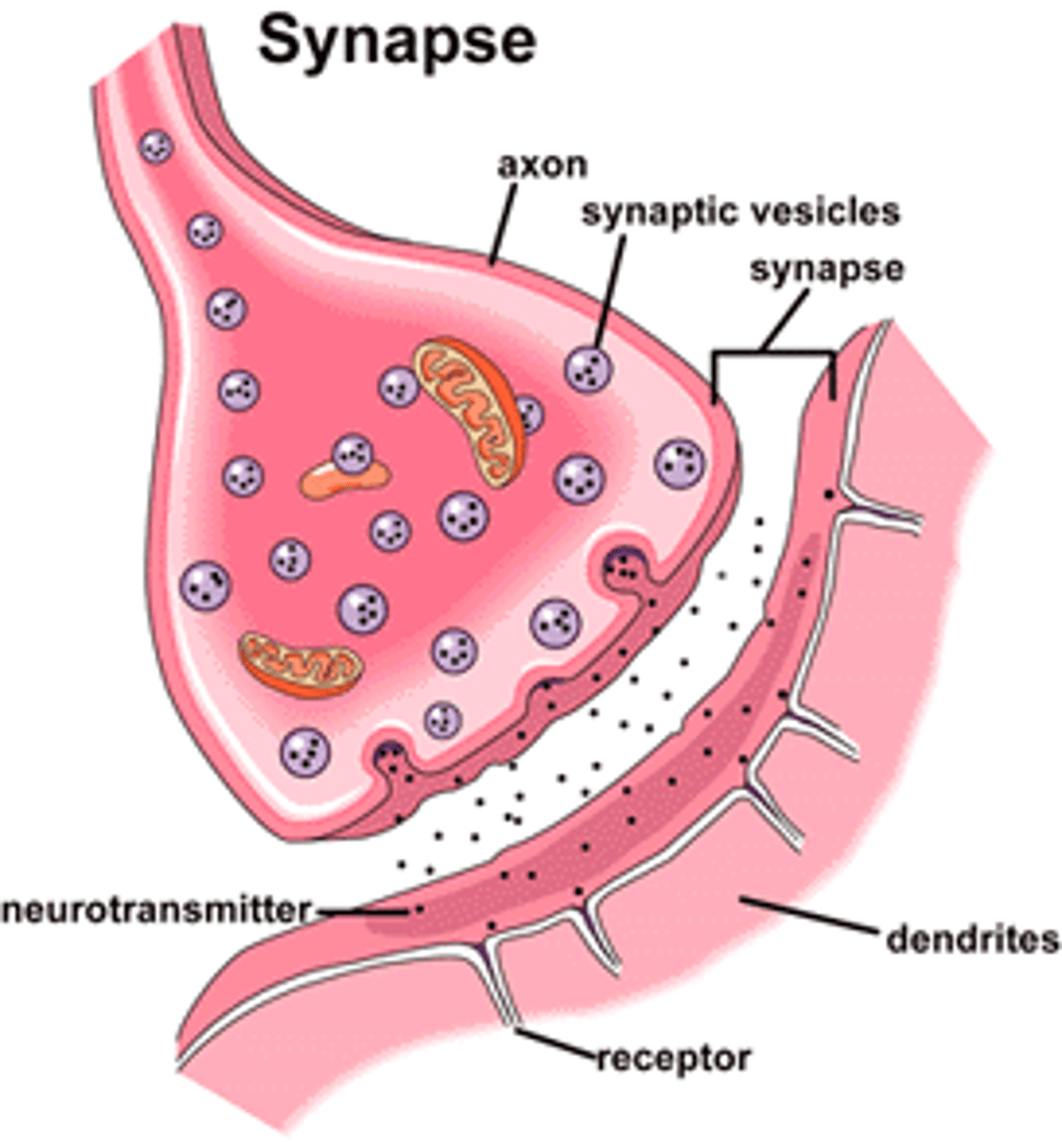
Define synaptic gap
a synaptic gap is the space between the axon terminal and the other neuron (the two neurons don't actually touch)
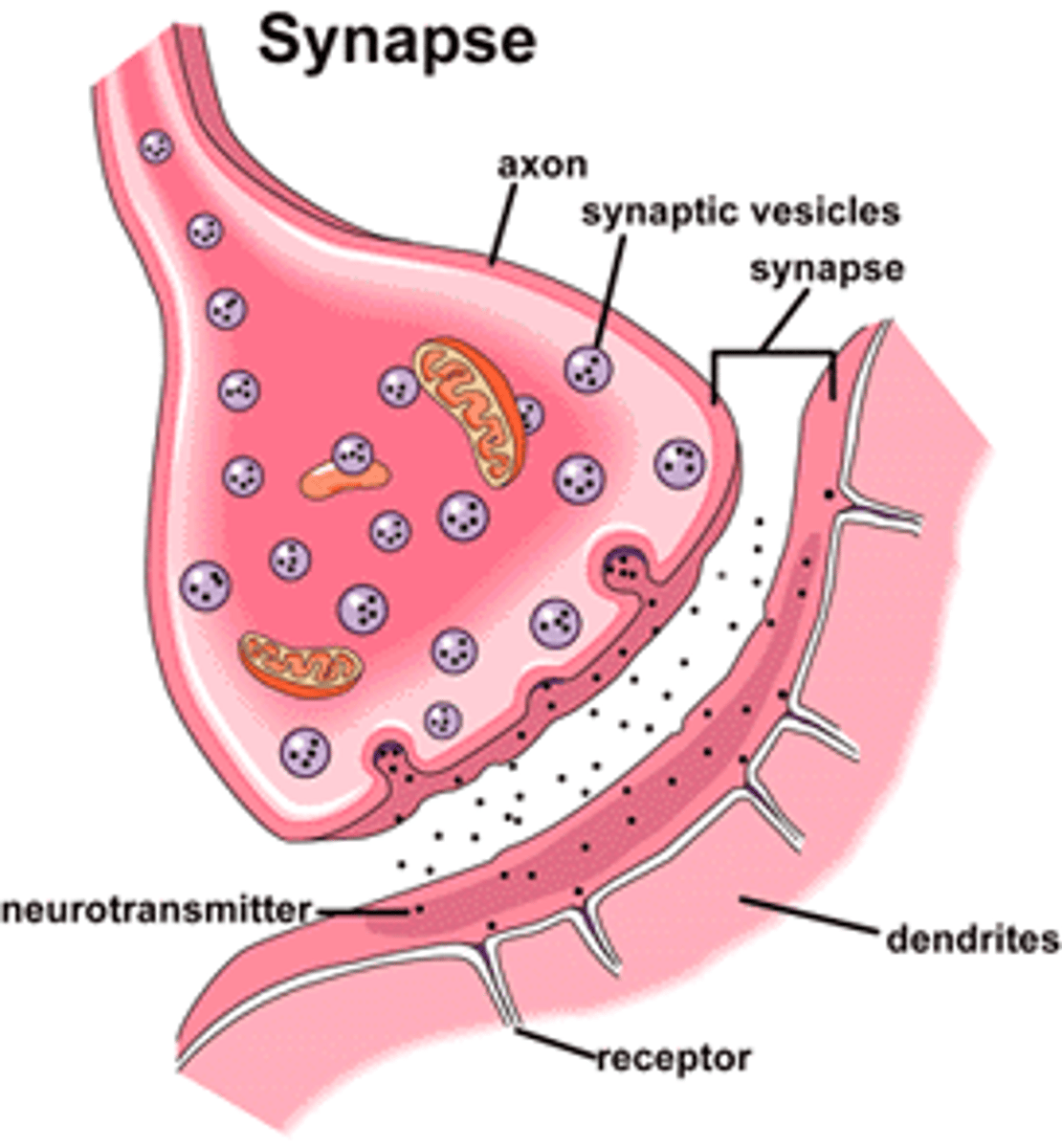
Define effector
effectors are cells that carry out a response to a stimulus
--> muscles and glands are called effector cells
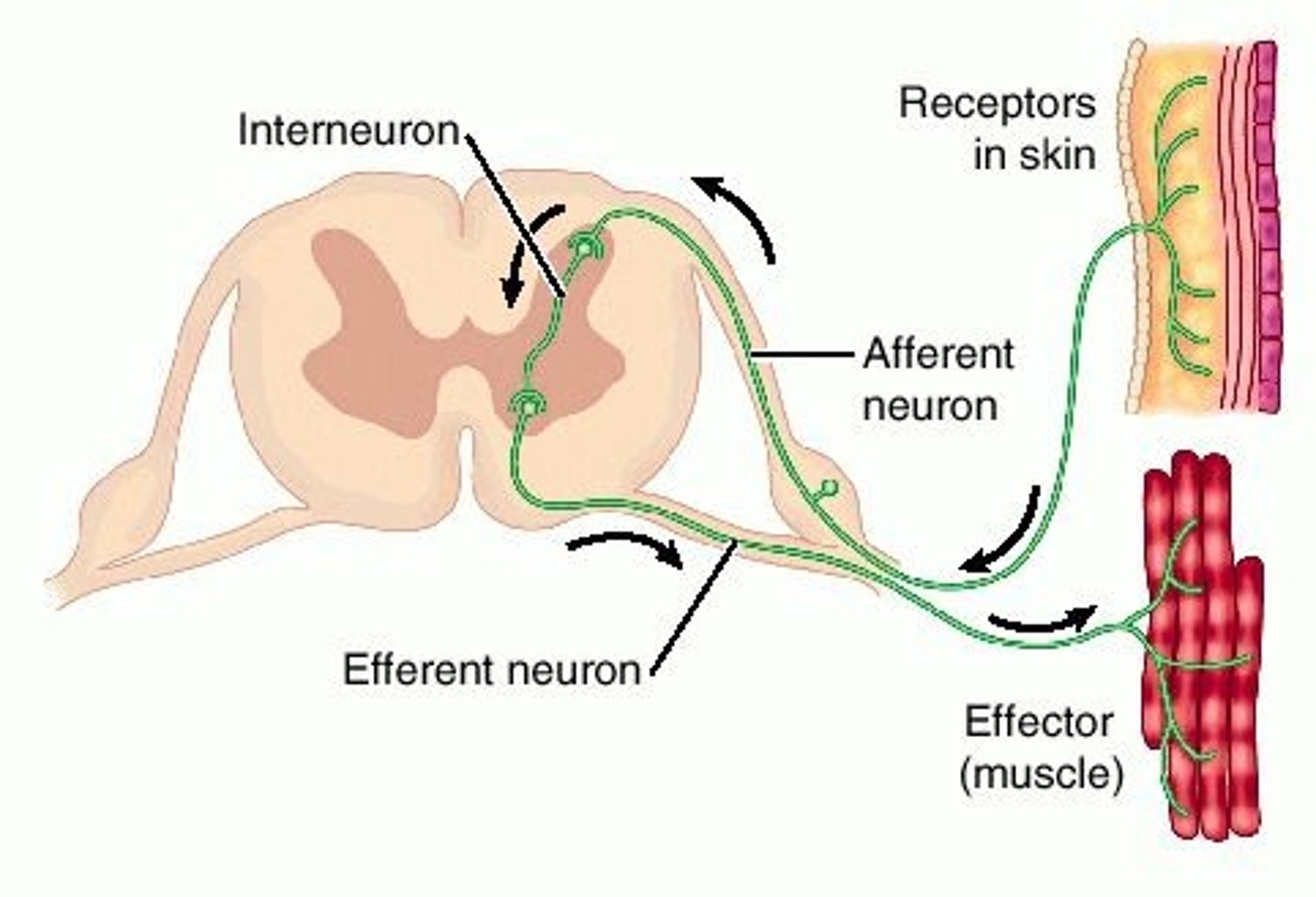
List examples of effector cells.
muscles, glands, organs that respond to a stimulus
In what direction can a signal pass across a typical synapse?
only in one direction
--> from the presynaptic cell to the postsynaptic cell
What are the 3 types of synapses?
1. synapse between a sensory cell (like a photoreceptor in the eye) and a sensory neuron
2. synapse between neurons where one neuron transmits a signal to another neuron
3. synapse between a motor neuron a muscle/gland where the neuron triggers the contraction
--> this is called a neuromuscular junction
State the role of neurotransmitters.
chemical messengers that carry information between cells at the synapse
--> neurotransmitters move by diffusion between adjacent cells
--> they have very localised effects but have significant effects on health and wellbeing of the entire organism despite working locally
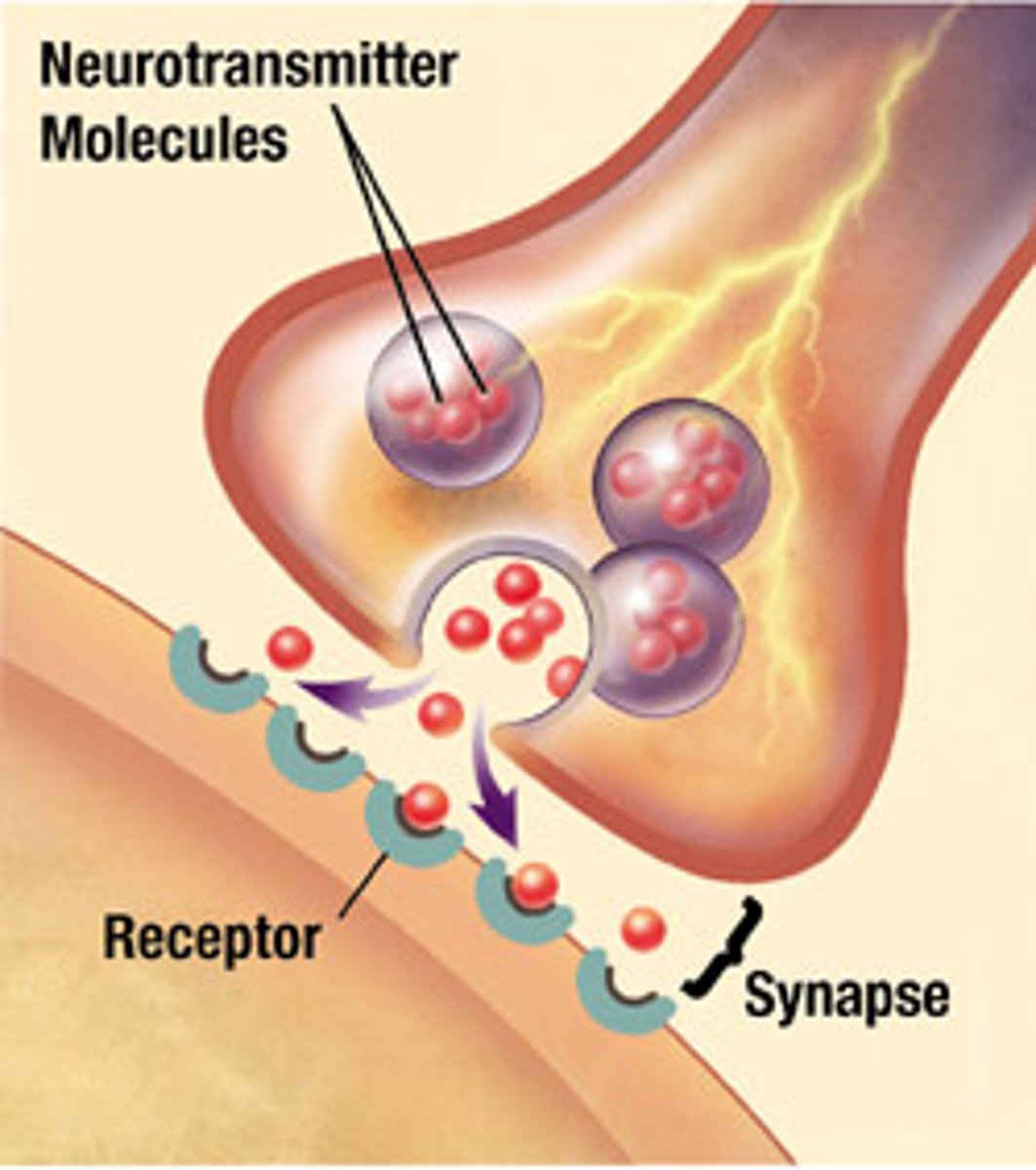
What are the categories of neurotransmitters?
1. amino acids
--> are the main inhibitory and excitatory messengers in the nervous system
eg. glutamic acid, GABA
2. amines
--> small molecules synthesised by modifying amino acids
eg. dopamine, seratonin
3. peptides
--> play roles in physiological and behavioral events
eg. endorphins
4. esters
--> when alcohol bonds to an acid
eg. acetylcholine
5. gasses
--> there are 3 gasses with inhibitory neurotransmitter function
--> they are toxic at high concentrations but important at low doses
eg. carbon monoxide, hydrogen sulfide
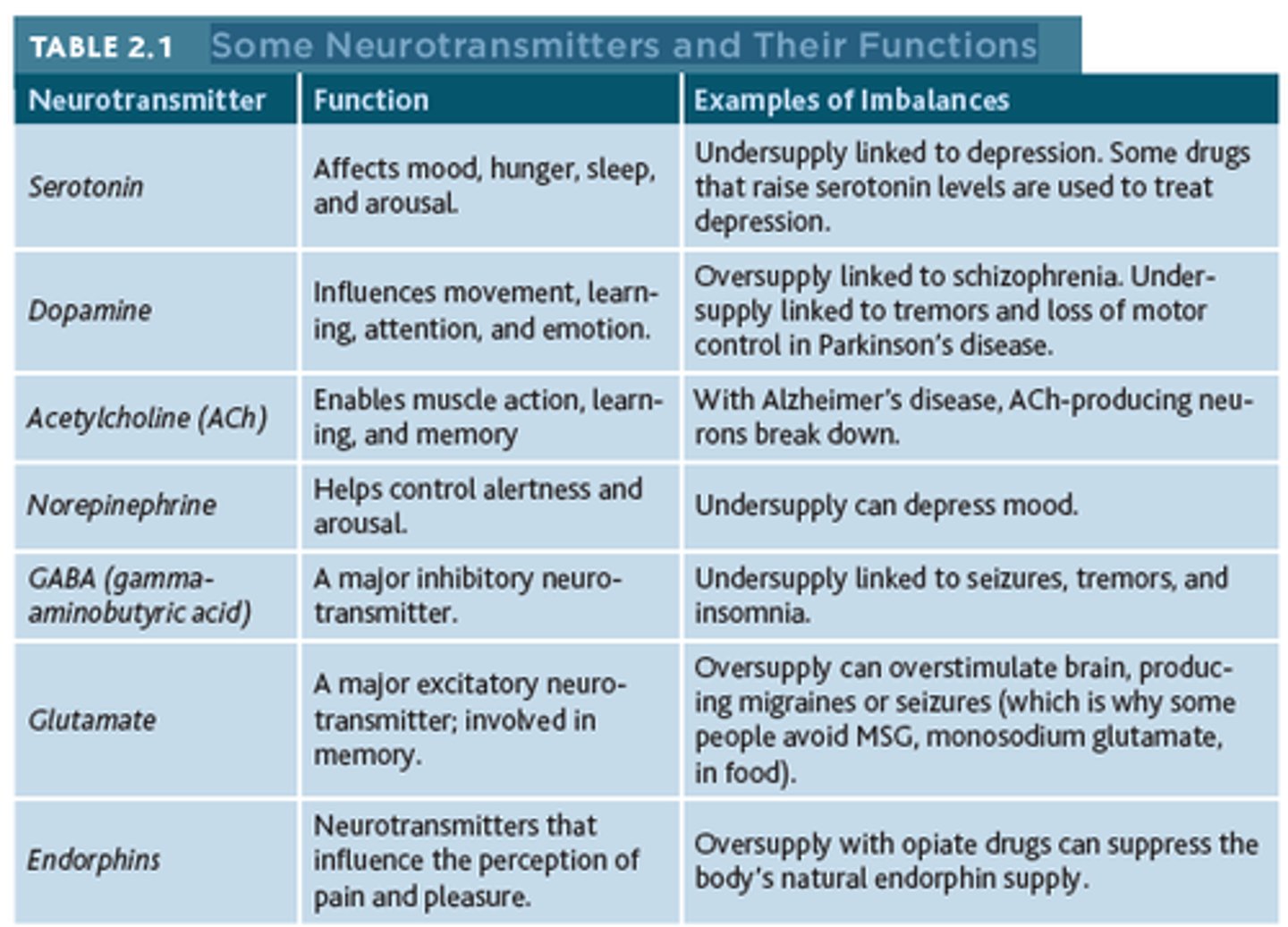
Outline the mechanism of synaptic transmission occurring at a presynaptic cell
1. nerve impulse arrives at axon terminal of presynaptic cell
2. depolarization of presynaptic cell membrane causes voltage gated calcium channels in axon terminal to open
3. calcium moves into the cell via facilitated diffusion
4. increase in calcium concentration causes vesicles containing neurotransmitters to move towards end of axon terminal and fuse with the presynaptic cell membrane
5. this causes neurotransmitters to be released into the synaptic gap via exocytosis
6. neurotransmitter diffuses across synaptic gap and bind to transmembrane receptors on postsynaptic cell membrane triggering a response in postsynaptic cell
--> this diffusion is rapid as synaptic gap distance is short allowing neurotransmitter molecules to trigger a response quicker
What is calcium's function in the release of neurotransmitters across a synaptic gap?
calcium functions as a chemical signal that triggers exocytosis of neurotransmitters from a presynaptic cell
Outline the mechanism of synaptic transmission occurring at a post-synaptic cell
1. the binding of a neurotransmitter to a transmembrane receptor on the postsynaptic cell membrane triggers to the opening of an ion channel in the postsynaptic cell membrane
2. this opening allows ions to move through into the postsynaptic cell through facilitated diffusion causing the membrane potential to change
3. depending on which ions move when the receptor is activated, the neurotransmitter can either have an:
--> excitatory effect: influx of positive ions will depolarise cell triggering action potential
-if there is enough of an increase to meet the threshold potential, then an action potential will be propagated
--> inhibitory effect: influx of negative ions will hyperpolarise cell preventing action potential
What is acetylcholine?
acetylcholine is one of the most common neurotransmitters in both invertebrates and vertebrates
--> it is used as a neurotransmitter in many synapses including between neurons and muscle fibres
Outline the digestion of acetylcholine by acetylcholinesterase and acetylcholine
1. acetylcholine is synthesised in axon terminals by an enzyme that combines choline with an acetyl group
2. acetylcholine is loaded into vesicles and released via exocytosis
3. acetylcholine diffuses across the synaptic gap
4. acetylcholine binds to the acetylcholine receptor in the postsynaptic cell membrane
5. acetylcholine binds to the acetylcholine receptor which is a ligand gated ion channel
--> when it binds, Na+ channels open and Na+ moves into the neuron via facilitated diffusion
6. if the threshold potential is reached with the influx of Na+, action potential is triggered and propagated as an impulse in the postsynaptic cell
7. acetylcholinesterase (enzyme) in synaptic gap rapidly breaks down acetylcholine into choline and acetate
8. choline is recycled back to the presynaptic cell and acetate is exerted as waste
acetylcholine must be removed from the synaptic gap after triggering a response
--> if not, it will continue to bind causing the generation of multiple action potentials and a continuous response
to prevent this, acetylcholinesterase breaks down acetylcholine into substances that can't activate acetylcholine receptors, choline and acetate.
When is an action potential generated?
an action potential is only generated if the membrane potential reaches the threshold potential
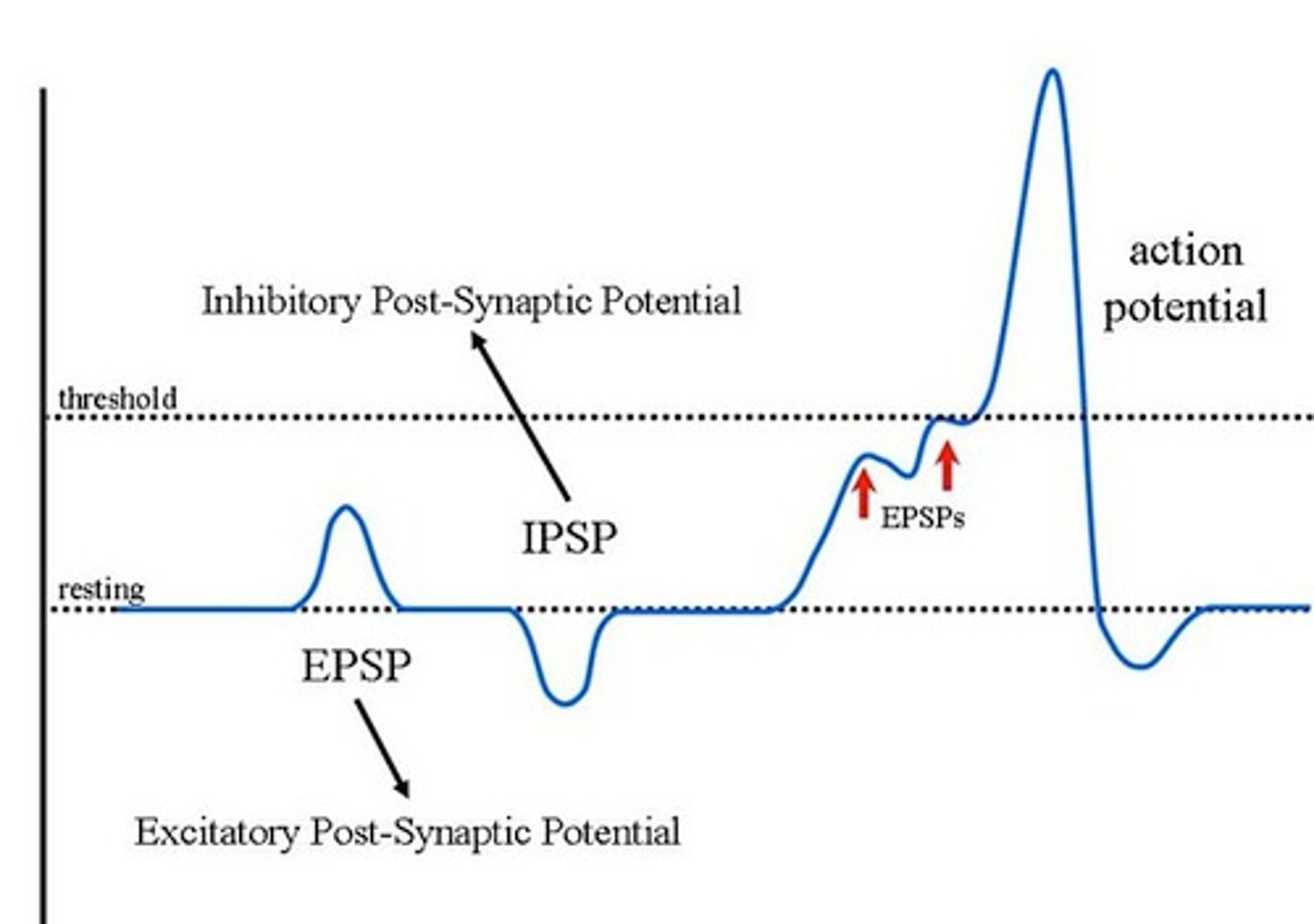
Define depolarisation
depolarisation is the process of the membrane potential becoming more positive compared to the outside of the cell
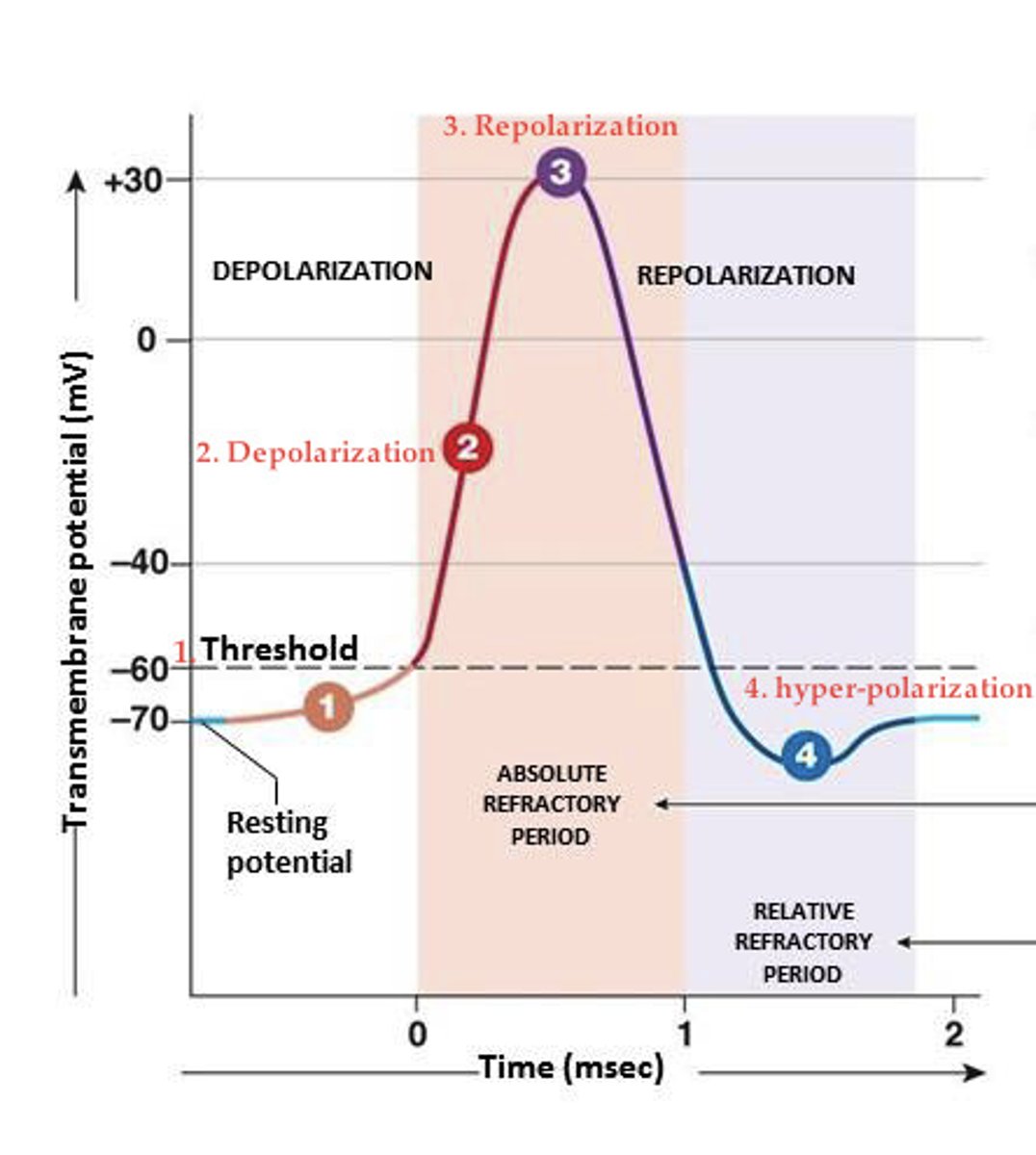
Outline the mechanism of depolarization during an action potential using voltage gated sodium channels.
1. when threshold potential is reached, additional Na+ gated ion channels open
2. this allows Na+ to move into the neuron via facilitated diffusion
3. the entry of Na+ causes the membrane to become positively charged raising the membrane potential to approximately 30mV
Define repolarization.
repolarisation is the process of the membrane potential becoming more negative compared to the outside of the cell
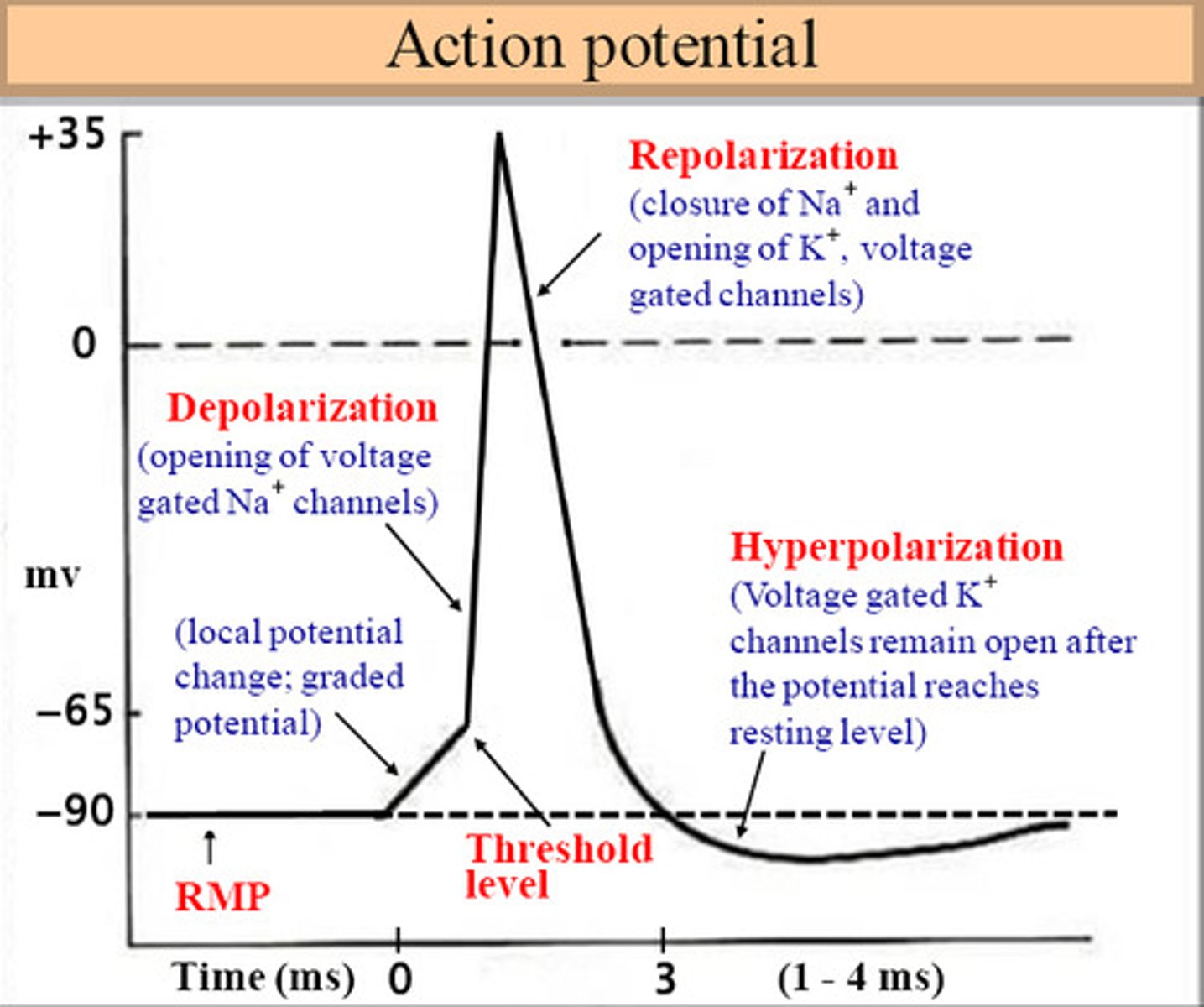
Outline the mechanism of repolarization during an action potential using voltage gated potassium channels.
1. at approximately 30mV, voltage gated K+ channels open
2. K+ moves out via facilitated diffusion
3. the movement of K+ causes membrane to become more negatively charged dropping the membrane potential back to -70mV
Describe the movement of sodium ions in a local current.
the propagation of action potential relies on a phenomena called local current
--> this is the process by which Na+ moves within neuron to generate action potentials in neighboring regions of the membrane
1. Na+ enters membrane through a channel during depolarisation
2. Na+ diffuses to both neighbouring sides of the channel from which the ion entered from
--> this movement is called local current
3. Na+ moving through local current bring their positive charge to neighbouring regions of the membrane
--> makes neighbouring membrane potential rise from -70mV
4. if charge in adjacent regions rises to threshold potential of -50mV, voltage gated Na+ channels open in that region causing an action potential
5. process repeats causing a wave of action potentials along the membrane
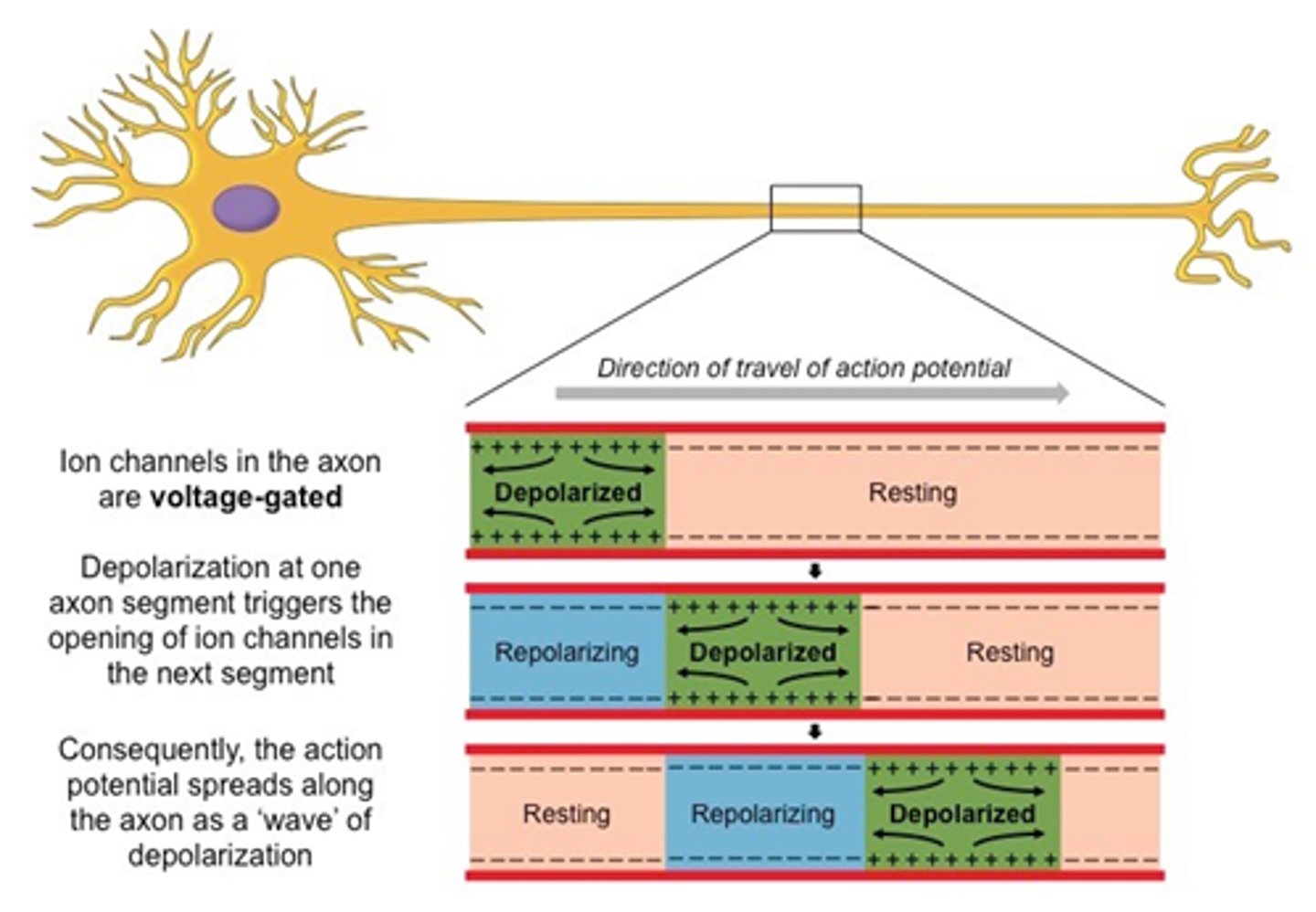
What is the effect of local current?
local current causes each successive part of the axon to reach the threshold potential
Explain the action potential sequence
1. resting potential
--> primarily maintained by the sodium potassium pump and results in 3Na+ being pumped out and 2K+ being pumped in
2. stimulus
--> to activate an electrical impulse, there must be a stimulus at neuron dendrites
--> a stimulus is any change in the environment that triggers an electrical impulse
--> stimulus opens Na+ gated ion channels and Na+ enters the cell
--> as Na+ enters, that part of the cell becomes slightly more positively charged
3. threshold
--> action potential is only initiated if the threshold potential is reached
--> threshold potential is a minimum membrane potential at which a neuron will fire an action potential
--> usually around -55mV
--> once membrane potential reaches threshold, an action potential is generated
--> if not, no action potential occurs
4. depolarisation
--> when threshold is reached, additional Na+ gated ion channels open
--> this allows sodium to move into the neuron via facilitated diffusion
--> entry of sodium causes membrane to become positively charged raising the membrane potential to around 30mV
5. repolarisation
--> at approx 30mV, voltage gated K+ channels open
--> K+ moves out via facilitated diffusion
--> this exit causes the membrane to become more negatively charged dropping membrane potential back to -70mV
6. refractory
--> concentration gradients are restored by the sodium potassium pump
--> this takes a few milliseconds causing a slight delay before the next action potential can be generated
the refractory period prevents propagation of an action potential backwards along membrane
--> part that has just fired is unresponsive until the action potential has moved out of range
--> only the unfired part can respond with an action potential, thus, action potential moves forward
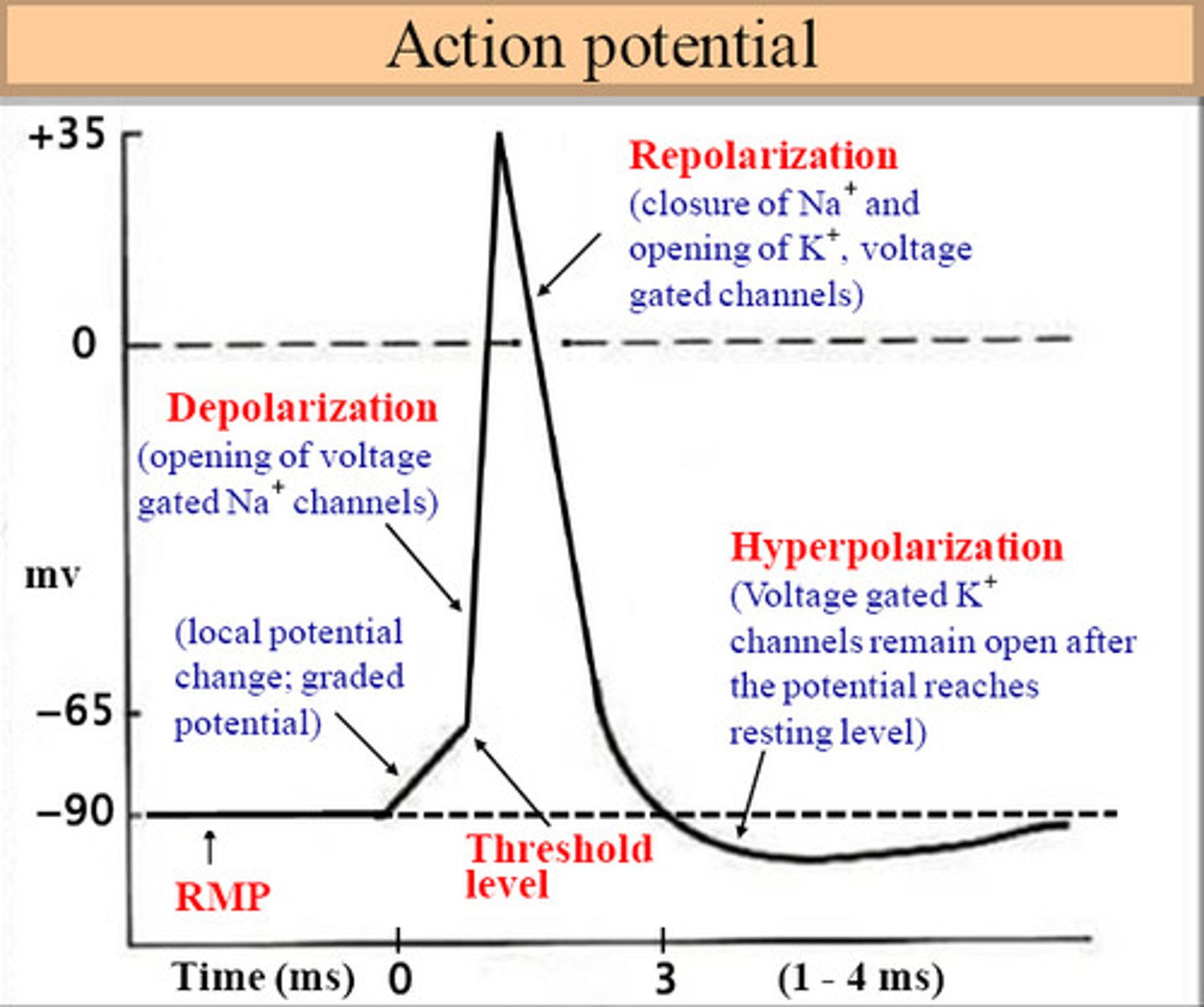
Outline the cause and consequence of the refractory period after depolarization.
refractory period is the time where membrane can't fire an action potential
--> without it, the neuron would send an electrical impulse backwards
Outline the use of oscilloscopes in measuring membrane potential.
an oscilloscope is an instrument that graphically displays electrical signals as waveforms
--> visually shows the change in voltage overtime
y axis: shows the voltage measurement
x axis: shows the time
electrodes are placed on either side of the membrane and connected to the oscilloscope
--> it will then display the charge between the electrodes during resting and action potentials in a section of neuron membrane
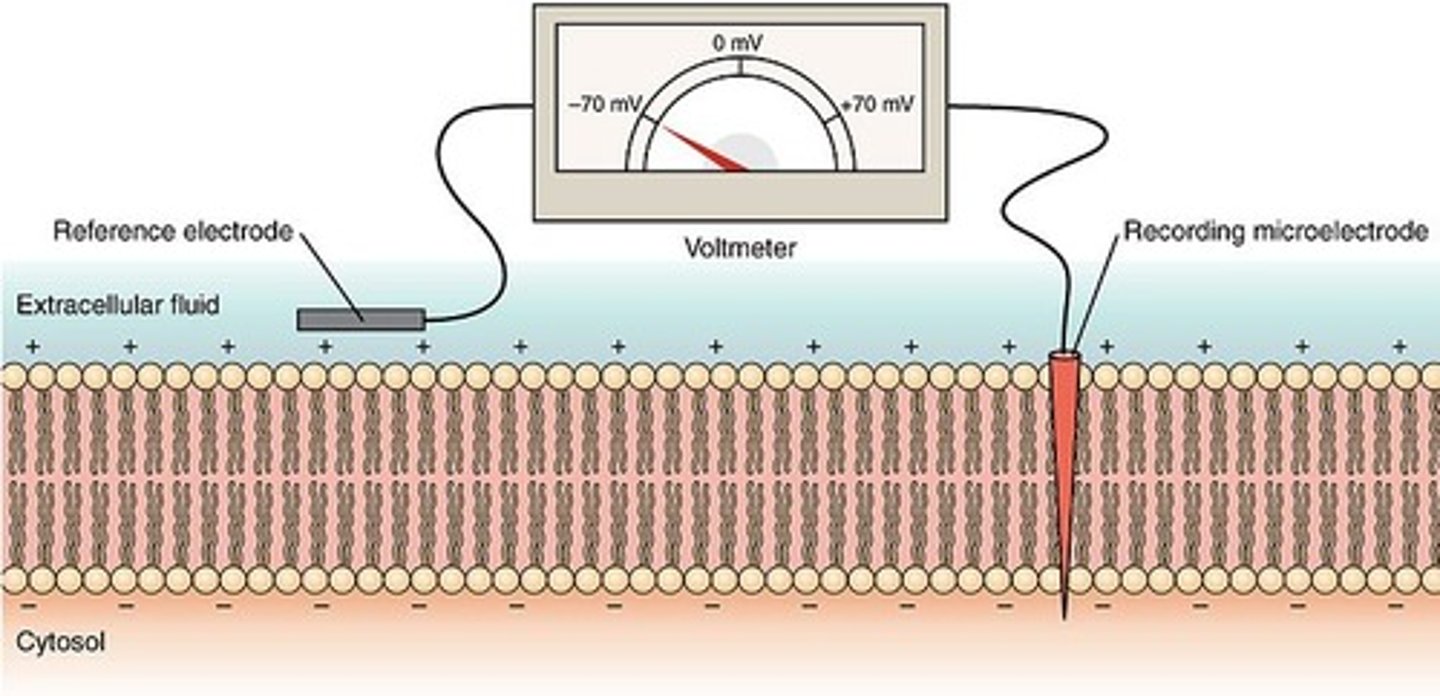
Annotate an oscilloscope trace to show the resting potential, action potential (depolarization and repolarization), threshold potential and refractory period.
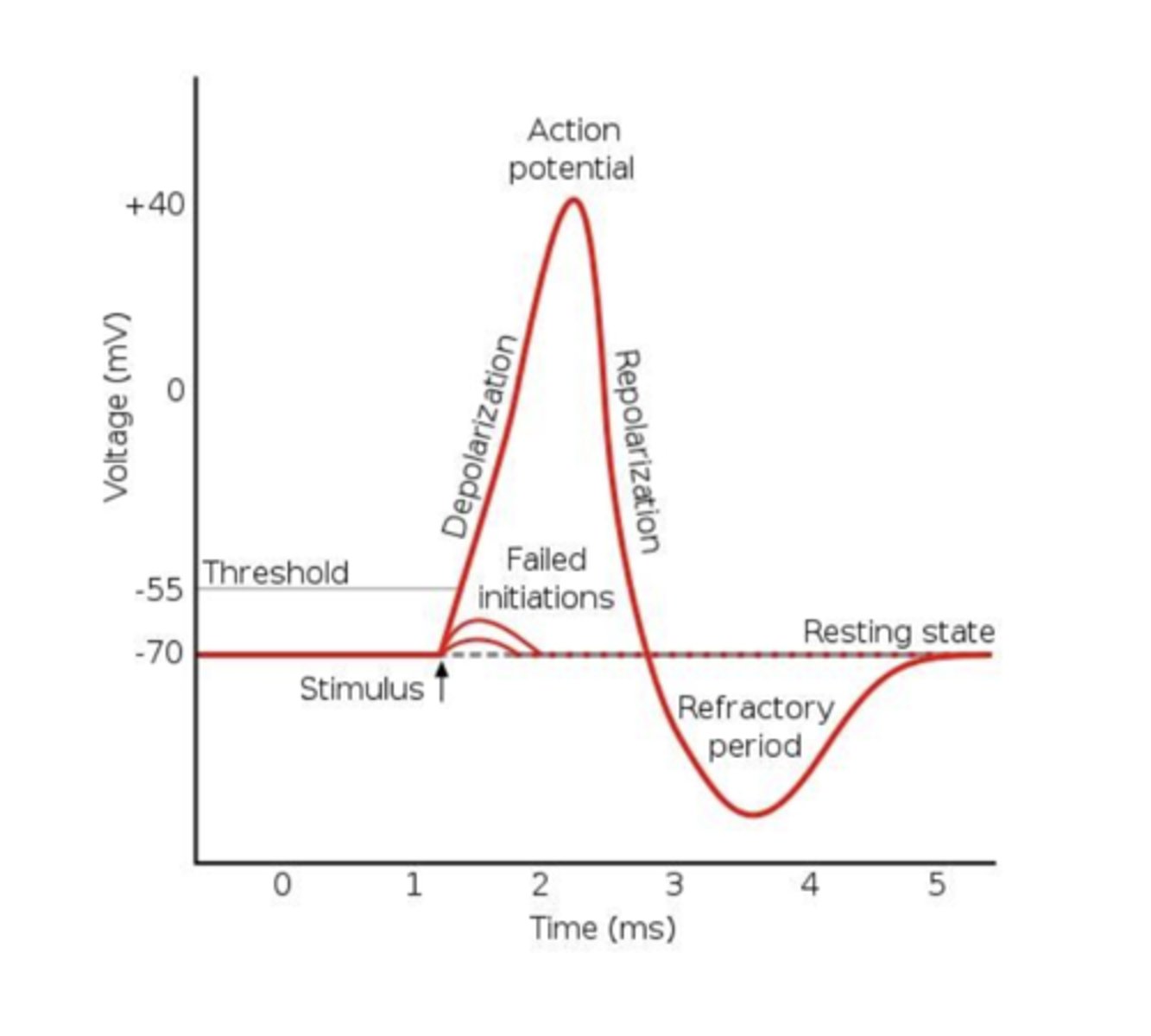
Deduce the number of nerve impulses per second from an oscilloscope trace.

How does the myelination of neurons allow for saltatory conduction?
saltatory conduction is the process by which nerve impulses travel rapidly down a myelinated neuron
--> due to the myelination of the neuron, the electrical impulse can jump from one Node of Ranvier to the next
--> this speeds the transmission of the signal to up to 100 ms-1
neurons will concentrate Na+ and K+ channels in the Nodes of Ranvier, allowing the action potential to leap between the nodes
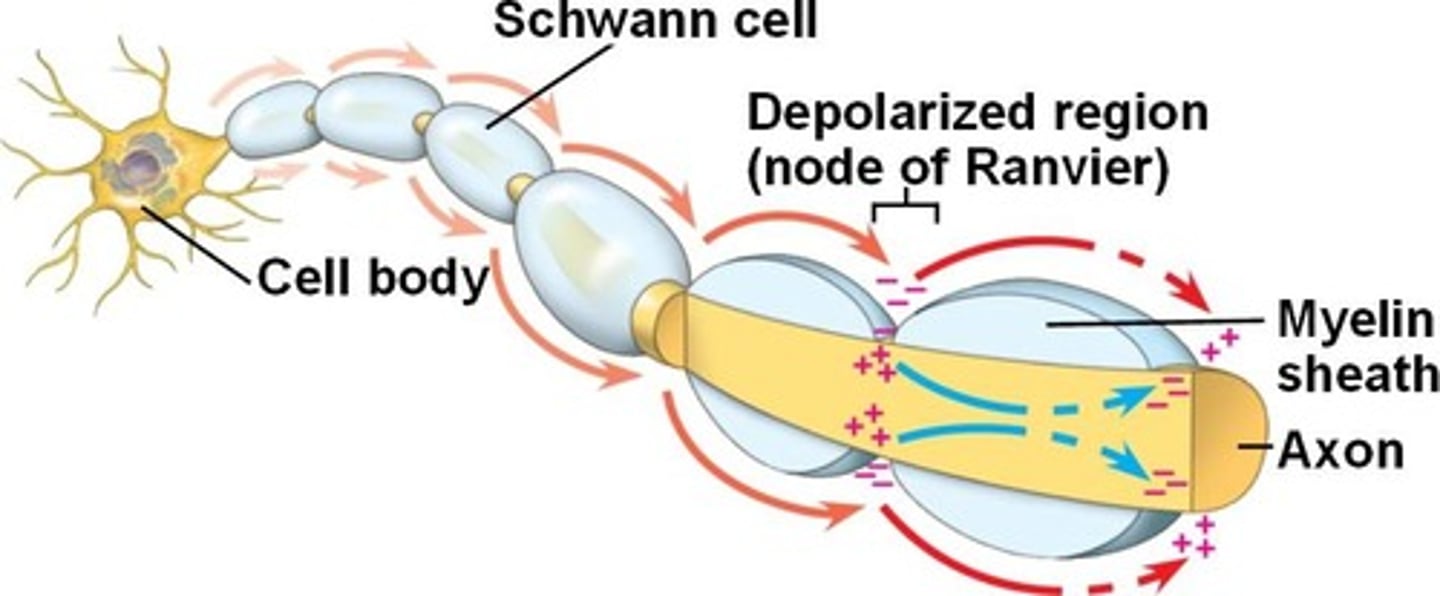
Define exogenous chemicals.
exogenous chemicals are chemicals that enter an organism from an external source and are not produced naturally by the body
examples: medication, product chemicals, air pollutants, cigarette smoke, pesticides, industrial chemicals, food additives, toxins in venom
they can alter synaptic transmission by stimulating or inhibiting components of the synapse
Outline the effects of neonicotinoids on synaptic transmission.
Neonicotinoids are synthetic insecticides that affects the synapses in insects by binding to acetylcholine receptors, inhibiting acetylcholine binding
--> without it binding, depolarization can't occur and post-synaptic cell won't fire an action potential
binding of neonicotinoid is irreversible and causes paralysis and death in insects
Outline the effects of cocaine on synaptic transmission.
cocaine impacts the synaptic communication process
--> binds to the dopamine reuptake transporter which is a transmembrane protein that pumps dopamine neurotransmitters back into the presynaptic neuron
--> this blocks the removal of dopamine from the synaptic cleft causing dopamine to accumulate and continue to activate the postsynaptic cell
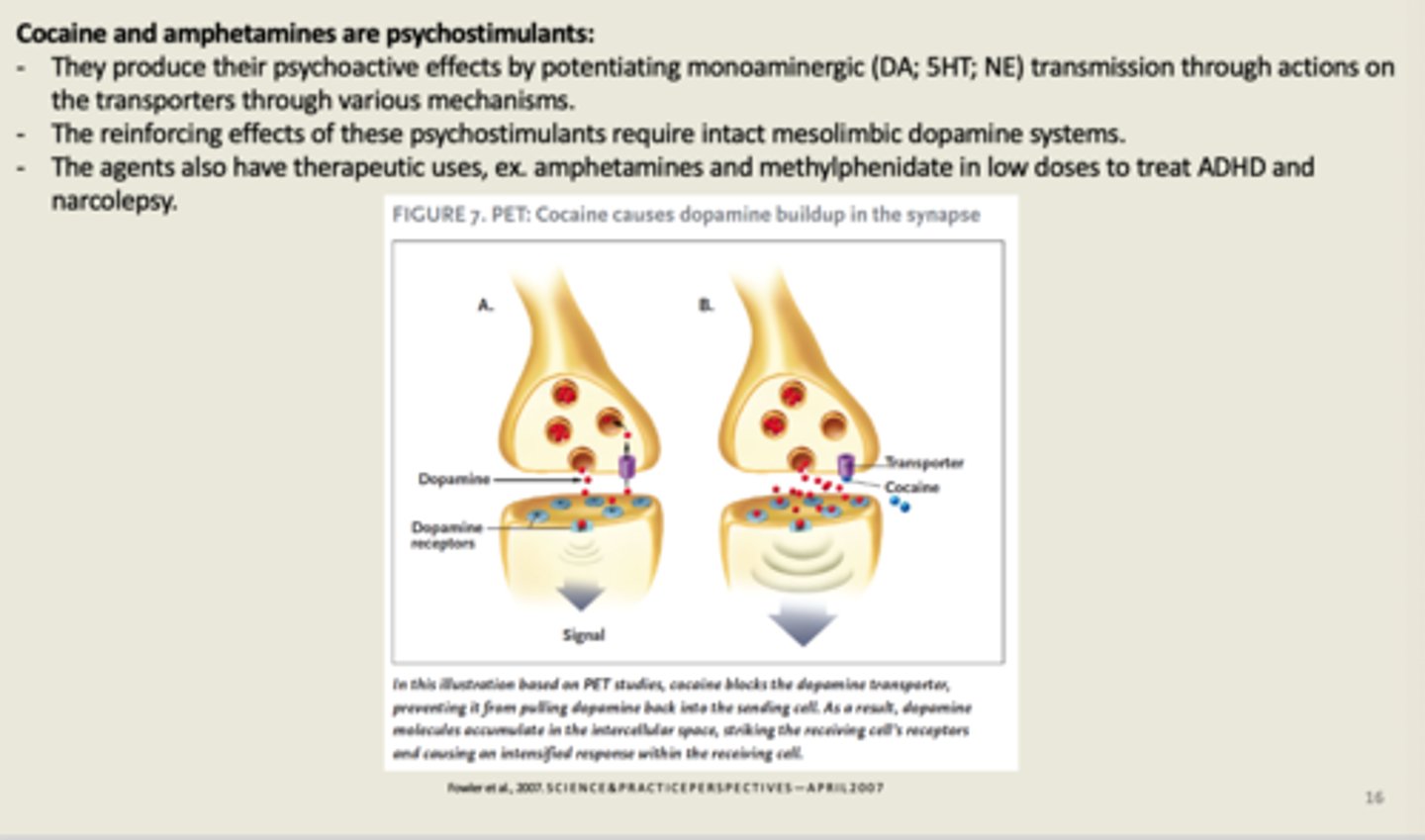
Outline the inhibitory mechanism of the neurotransmitter GABA.
Gamma-aminobutyric acid (GABA) is the most common inhibitory neurotransmitter in the brain
--> it lessens the ability of a nerve cell to receive, create or send chemical messages to other nerve cells
by slowing these functions, GABA can reduce stress, improve sleep and relive anxiety
a receptor for GABA is a ligand gated Cl- ion channel
--> when GABA binds, Cl- ions flow into the cell, hyperpolarizing the membrane potential
Outline the consequence of hyperpolarization by inhibitory neurotransmitters.
inhibitory postsynaptic potential (IPSP) is a response to a neurotransmitter that decreases the likelihood of a neuron firing an action potential
--> inhibitory neurotransmitters causes the membrane potential to become hyperpolarised
--> this greater negativity of membrane potential makes it harder for the neuron to reach the threshold required to generate an action potential
Describe the effects of excitatory and inhibitory neurotransmitters on the ability of a postsynaptic cell to reach its threshold potential.
a postsynaptic potential is a temporary change in membrane potential of a region of a cell membrane due to the binding of a neurotransmitter at a synapse
--> excitatory postsynaptic potentials (EPSP): due to the binding of excitatory neurotransmitters
-increase membrane potential making it easier to reach threshold
--> inhibitory postsynaptic potentials (IPSP)
-decrease membrane potential making it harder to reach threshold
Define summation.
summation is the combined effect of all input to the postsynaptic cell
--> multiple presynaptic neurons can form synapses with the same postsynaptic cell
--> action potential generation depends on the combined effects of IPSP and EPSP inputs
--> action potential only occurs if there are more excitatory inputs than inhibitory inputs
Interpret graphical representations of the summation of combinations of excitatory and inhibitory neurotransmitters.
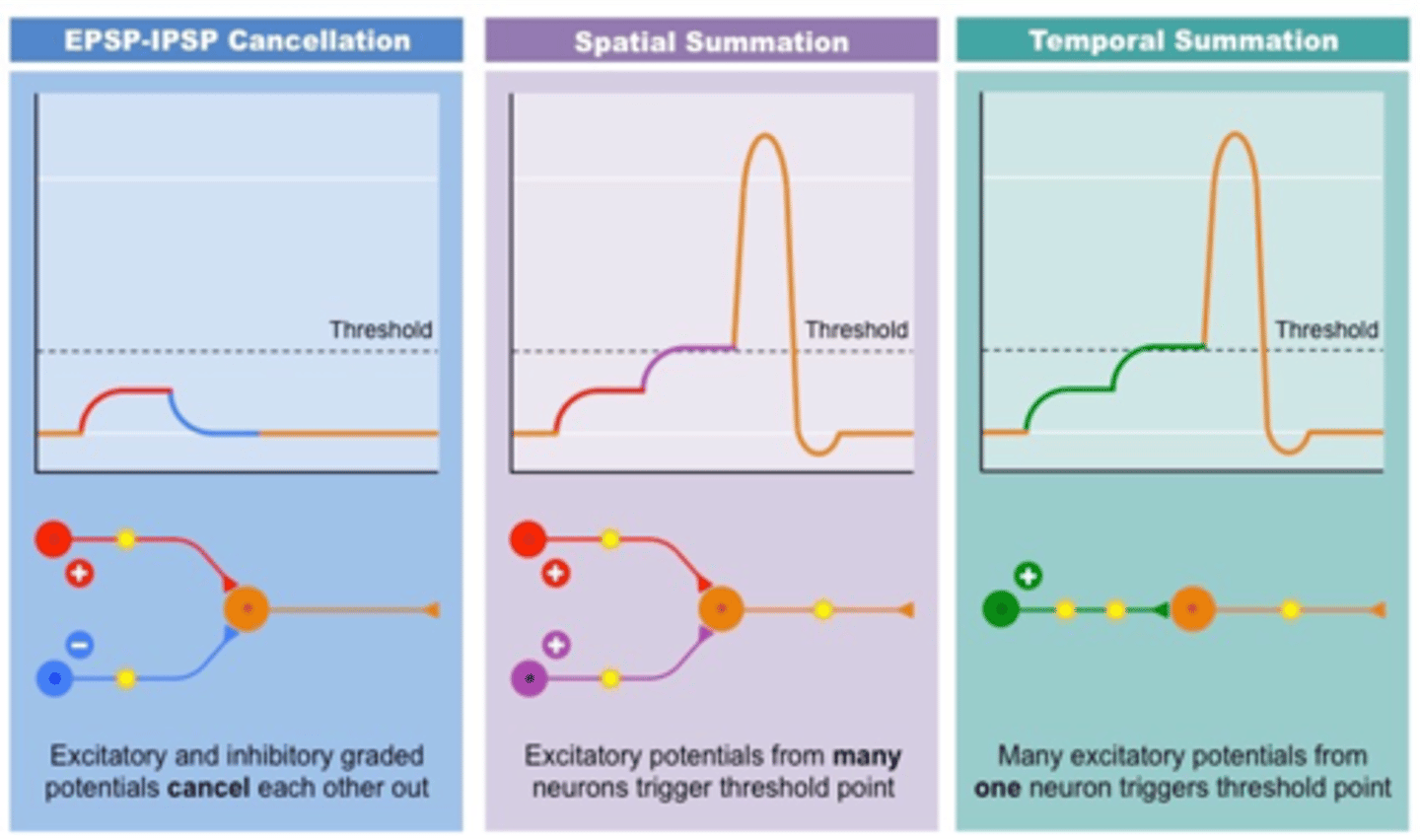
Explain pain as a stimulus and the mechanism of pain
stimulus at dendrites can be a physical input (light, sound, touch, temperature) or a chemical signal (taste, smell, neurotransmitter from another neuron)
--> pain stimuli are detected by sensory neurons in the skin, muscles and organs
--> the type of receptor on dendrite determines the type of stimulus to which the neuron can respond
3 classes of pain stimuli:
1. mechanical- pressure, pinch or rotation
2. thermal- heat above 42 and cold below -15
3. chemical- acids, alkalis, irritants, capsaicin (in chilli)
mechanism of pain stimulus:
1. stimulus activates sensory neuron
2. impulse is passed to interneuron in the spinal cord
3. interneuron relays message to cerebral cortex to recognise pain
Outline consciousness as an emergent property.
consciousness is the state of being awake or aware
--> it is argued that consciousness comes from the collective interaction of neurons in the brain
--> hence it is an emergent property as it is the result of interacting neurons, not the neuron itself
